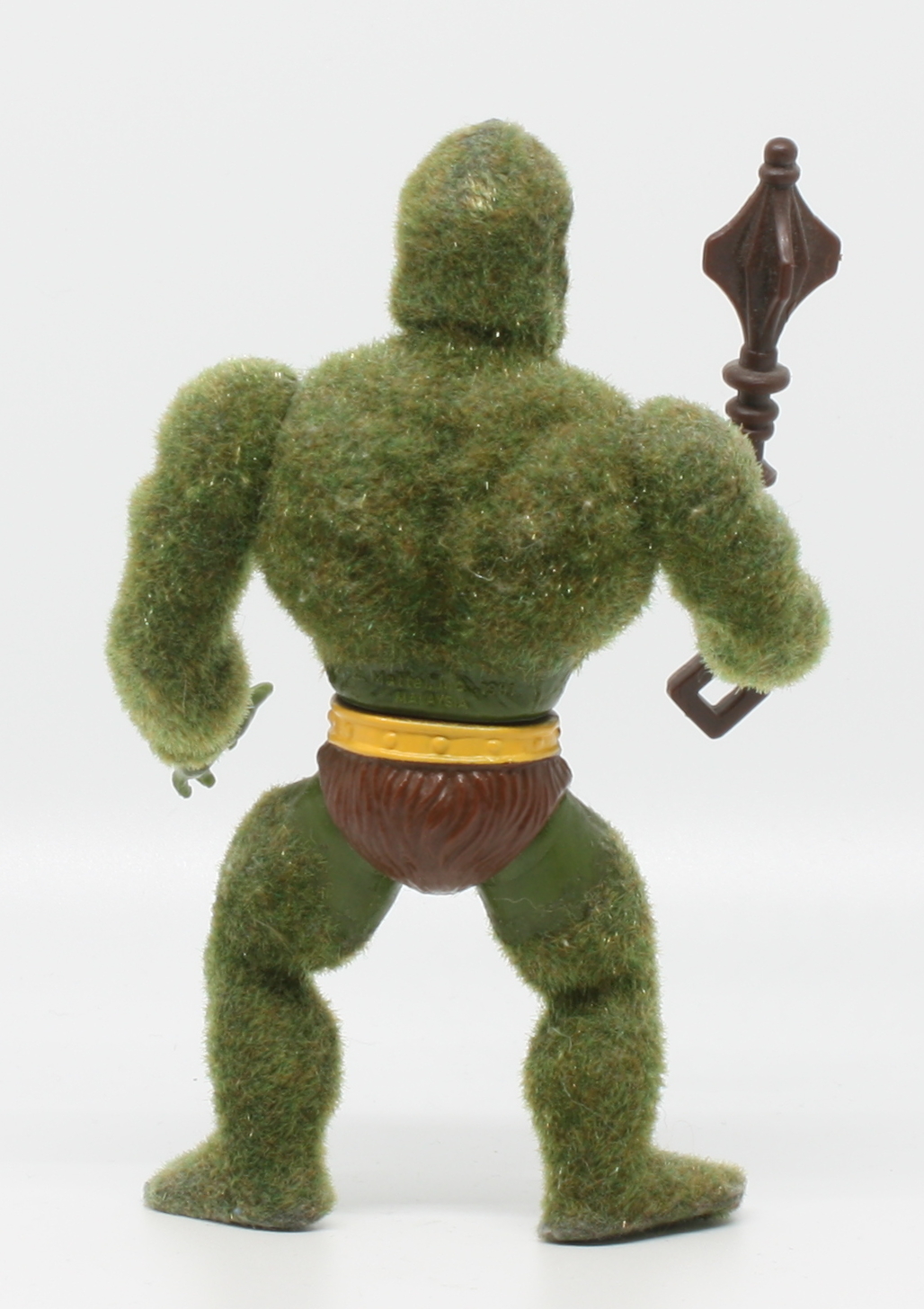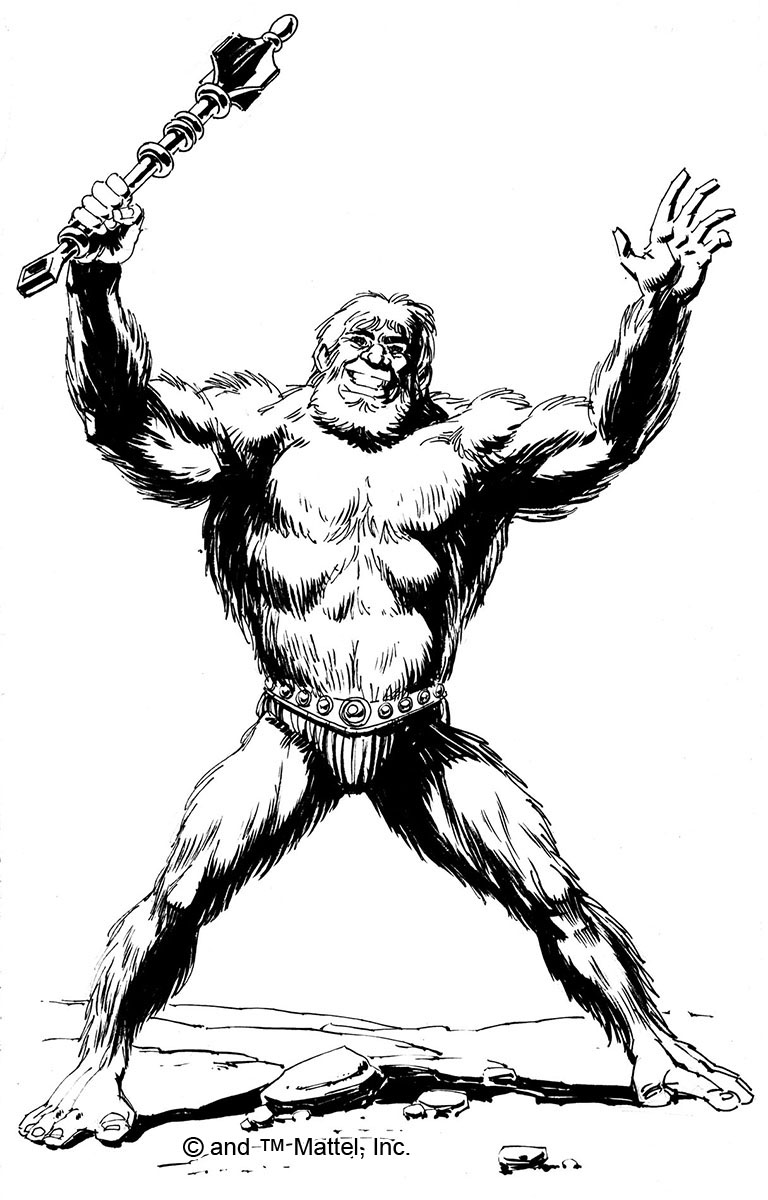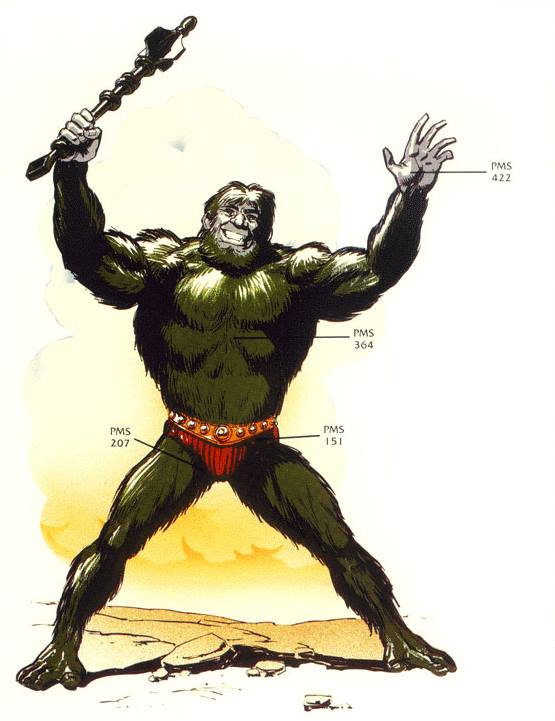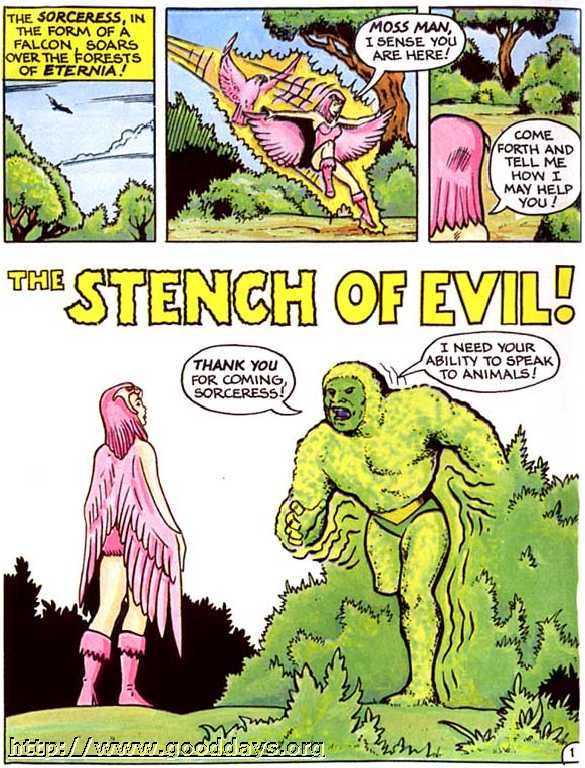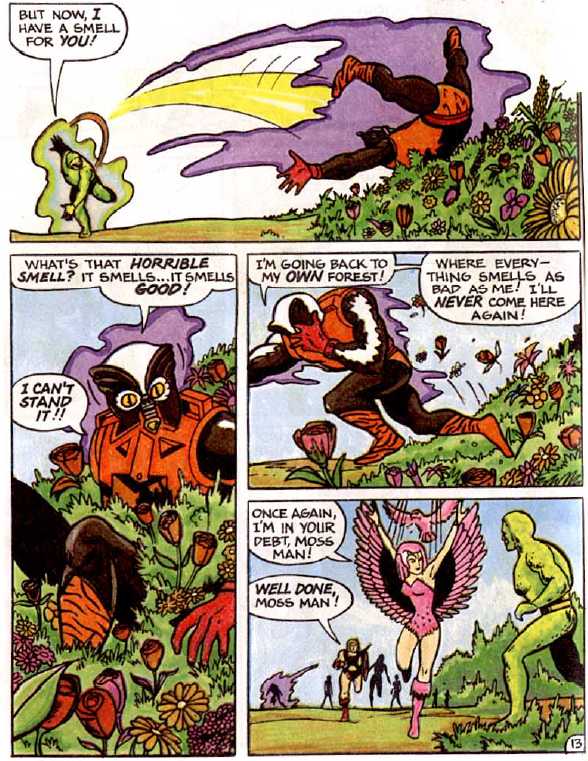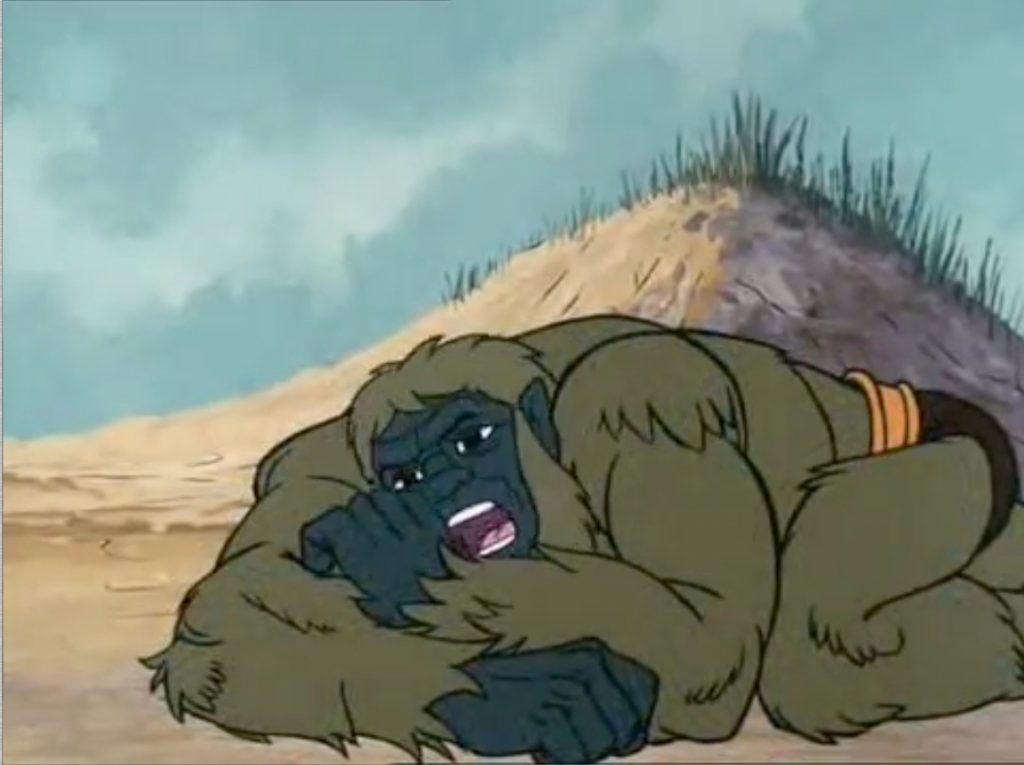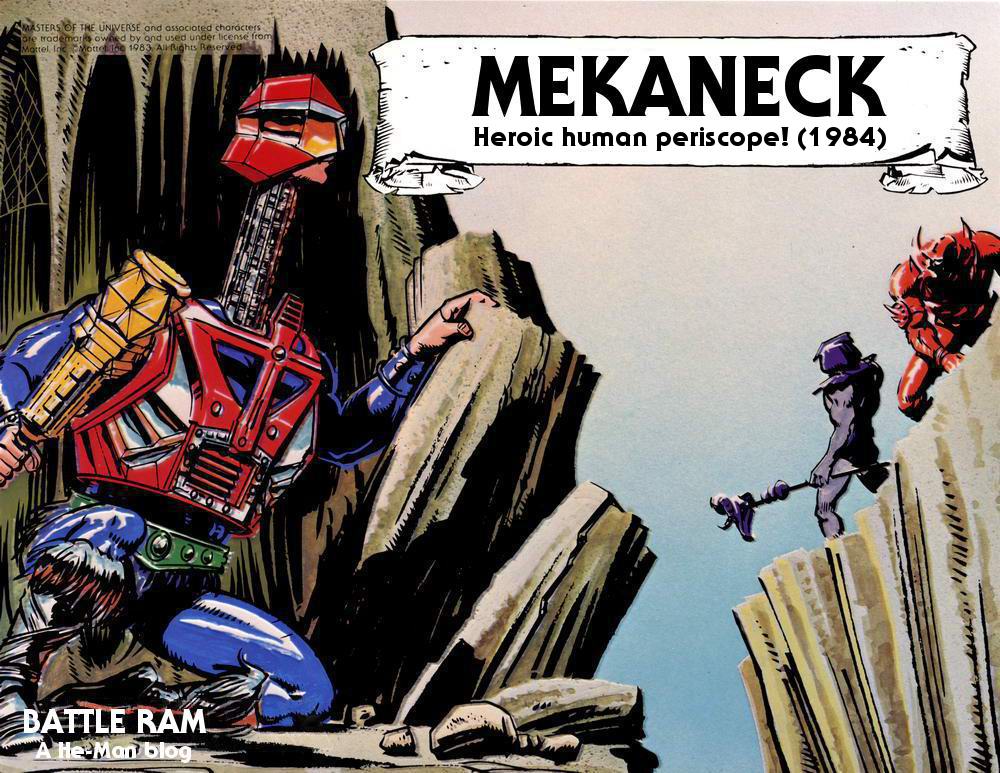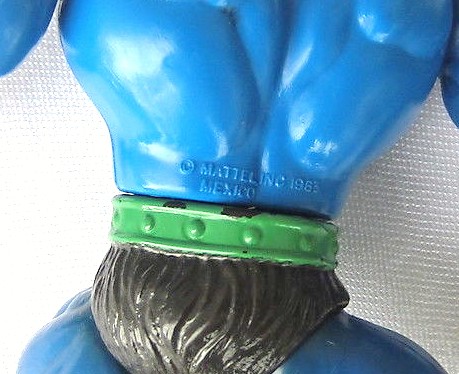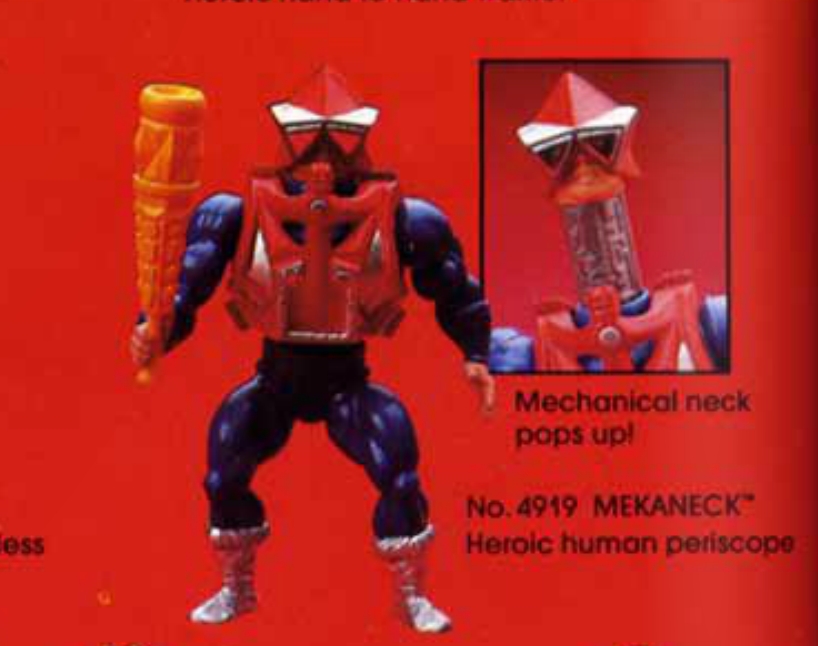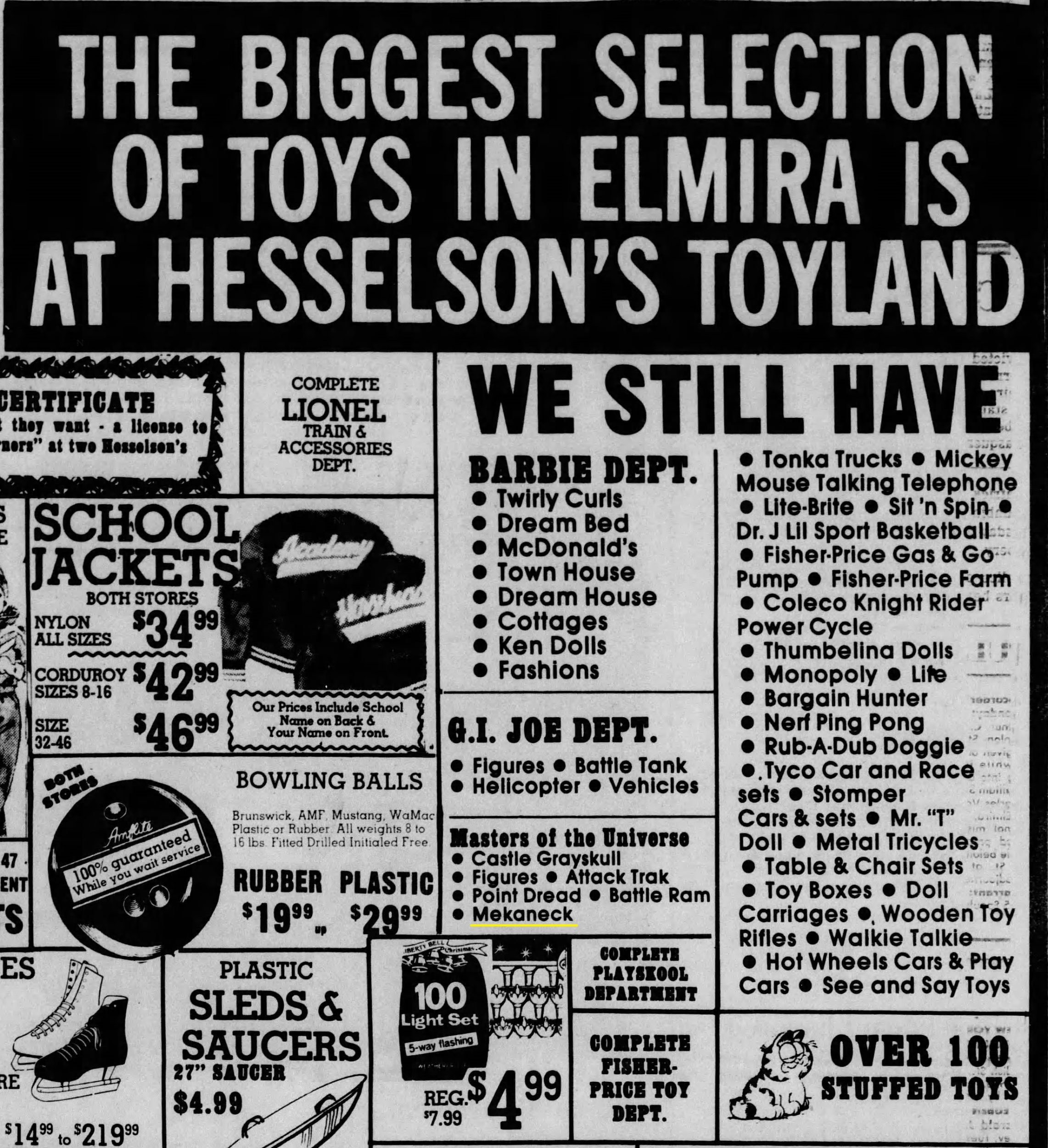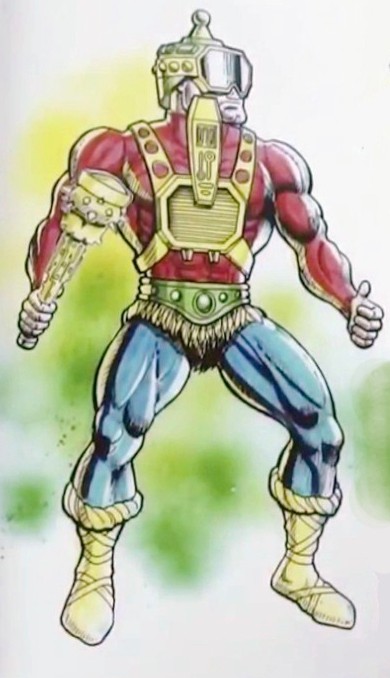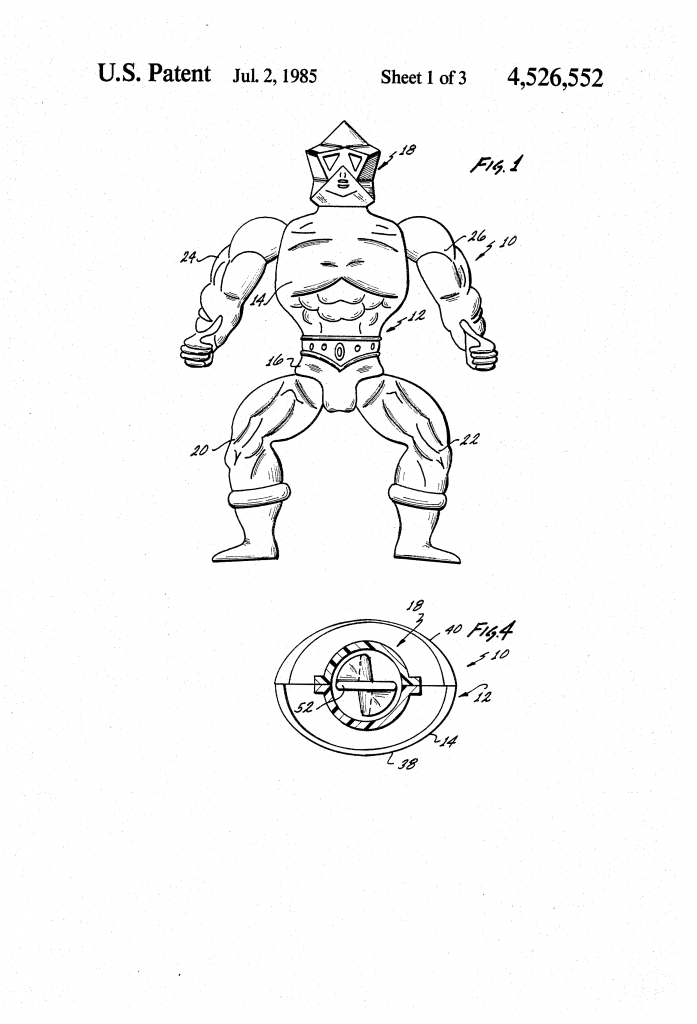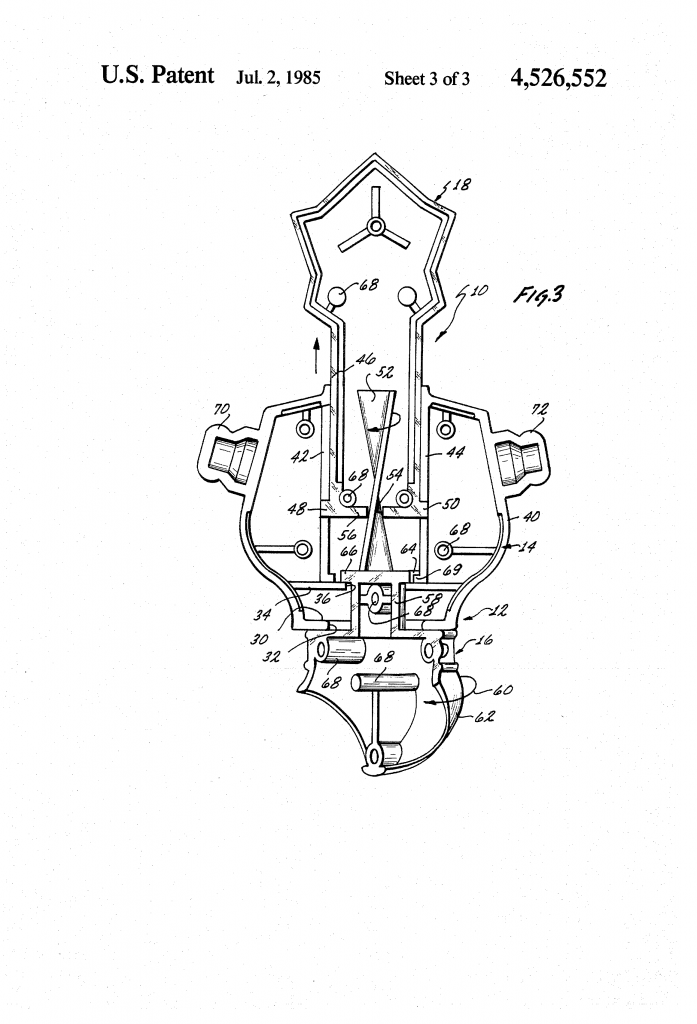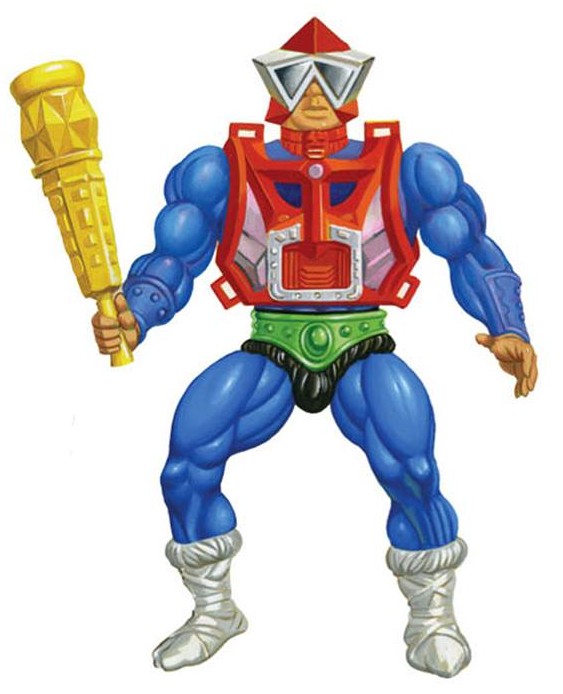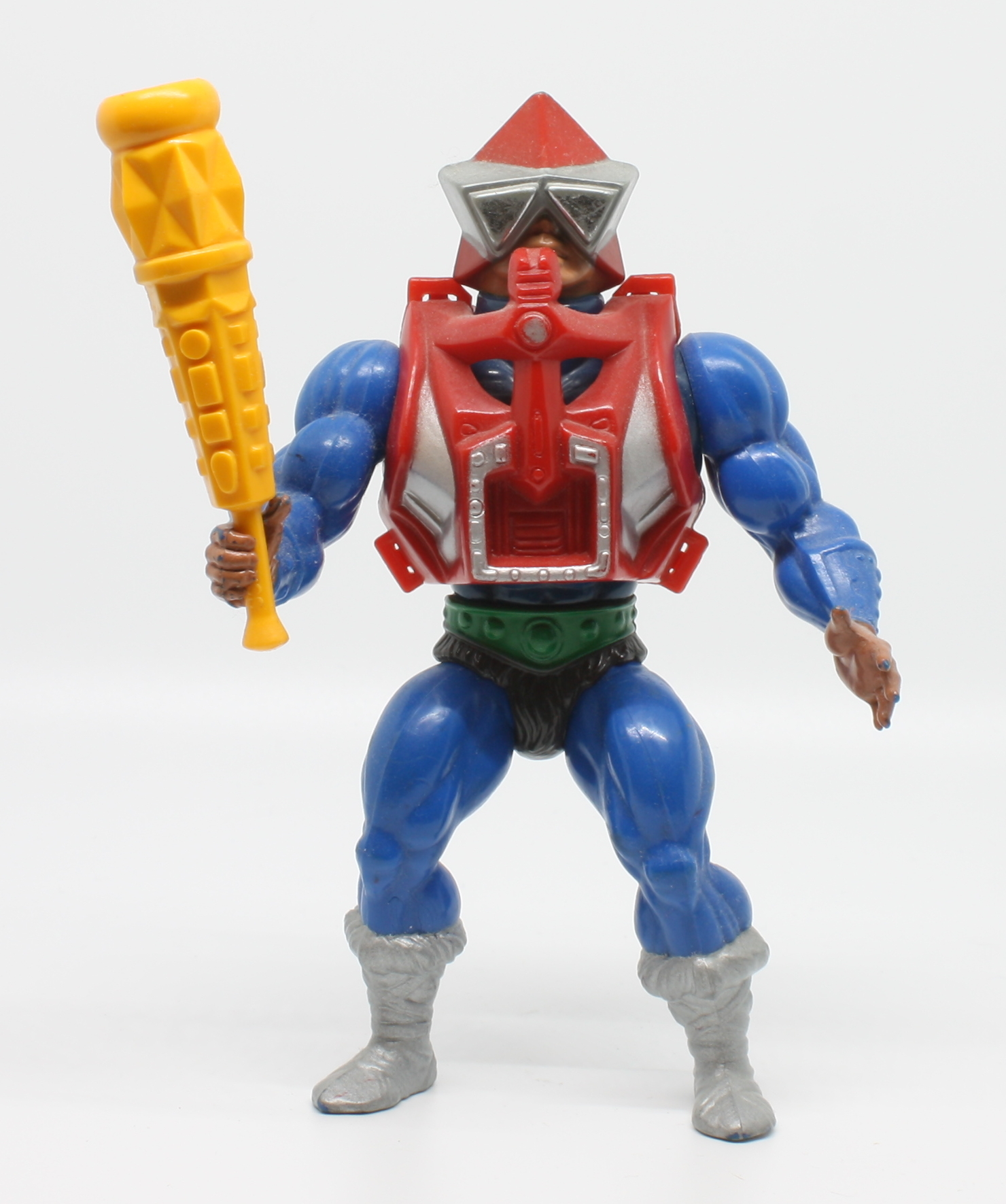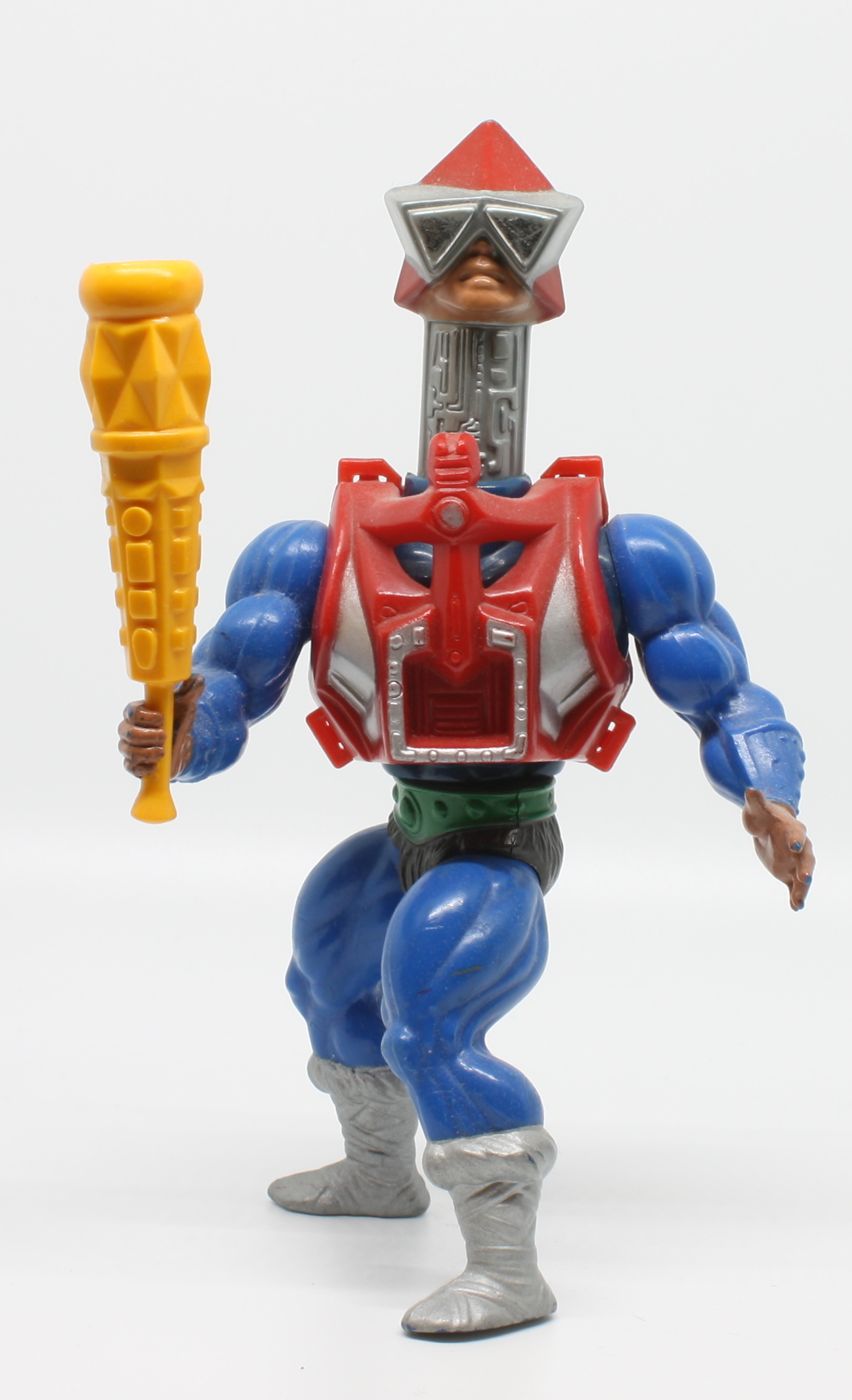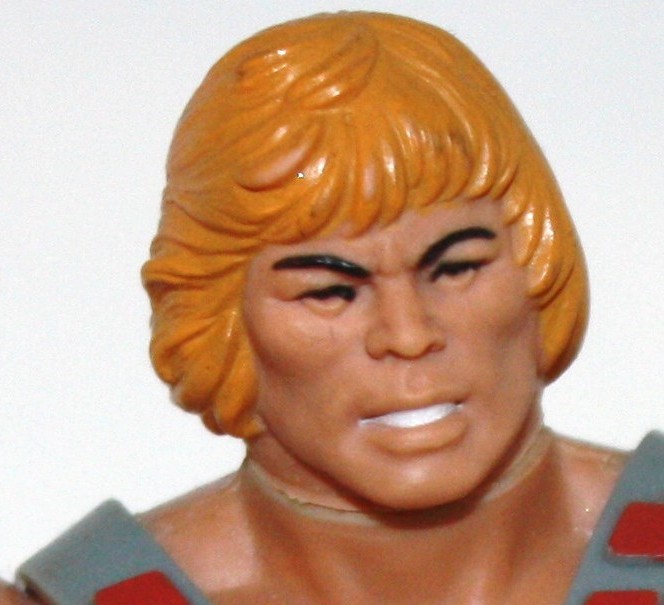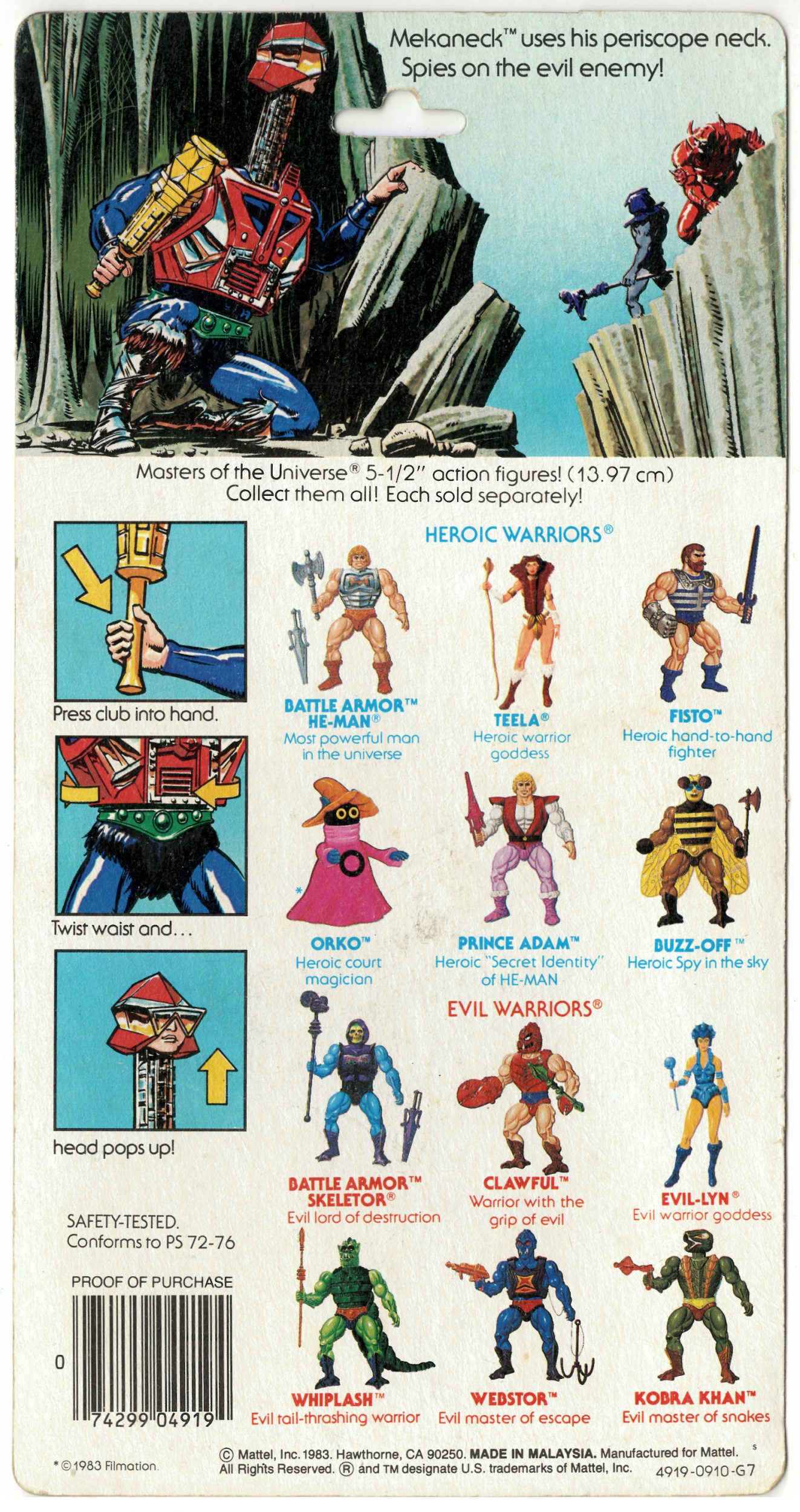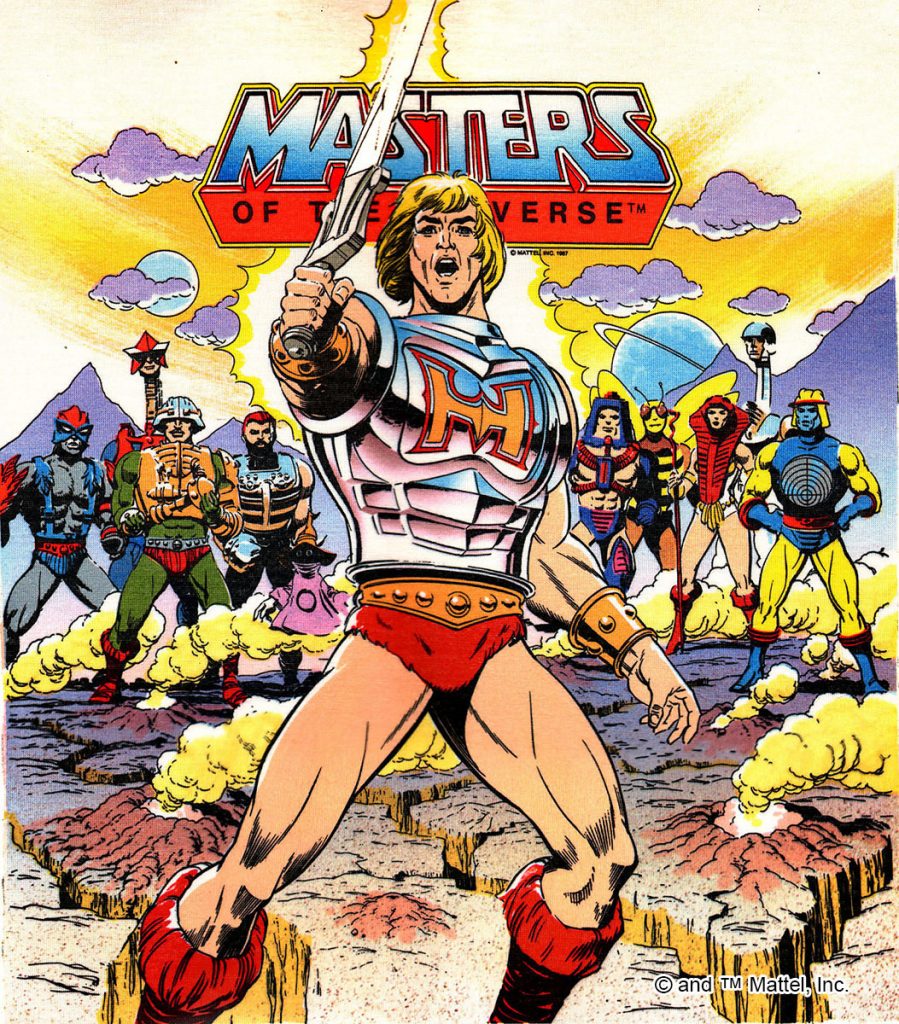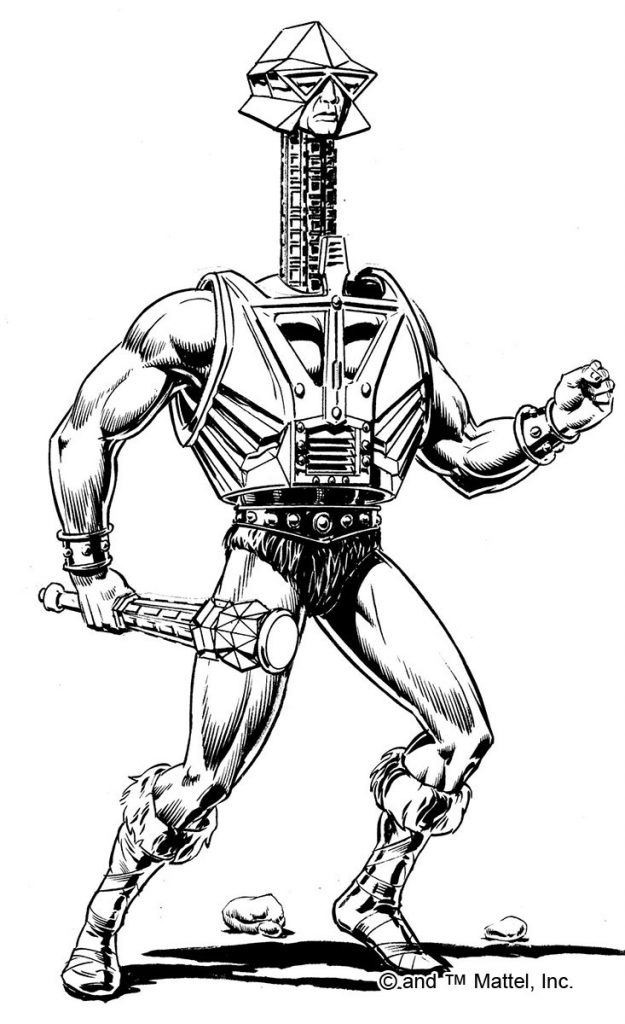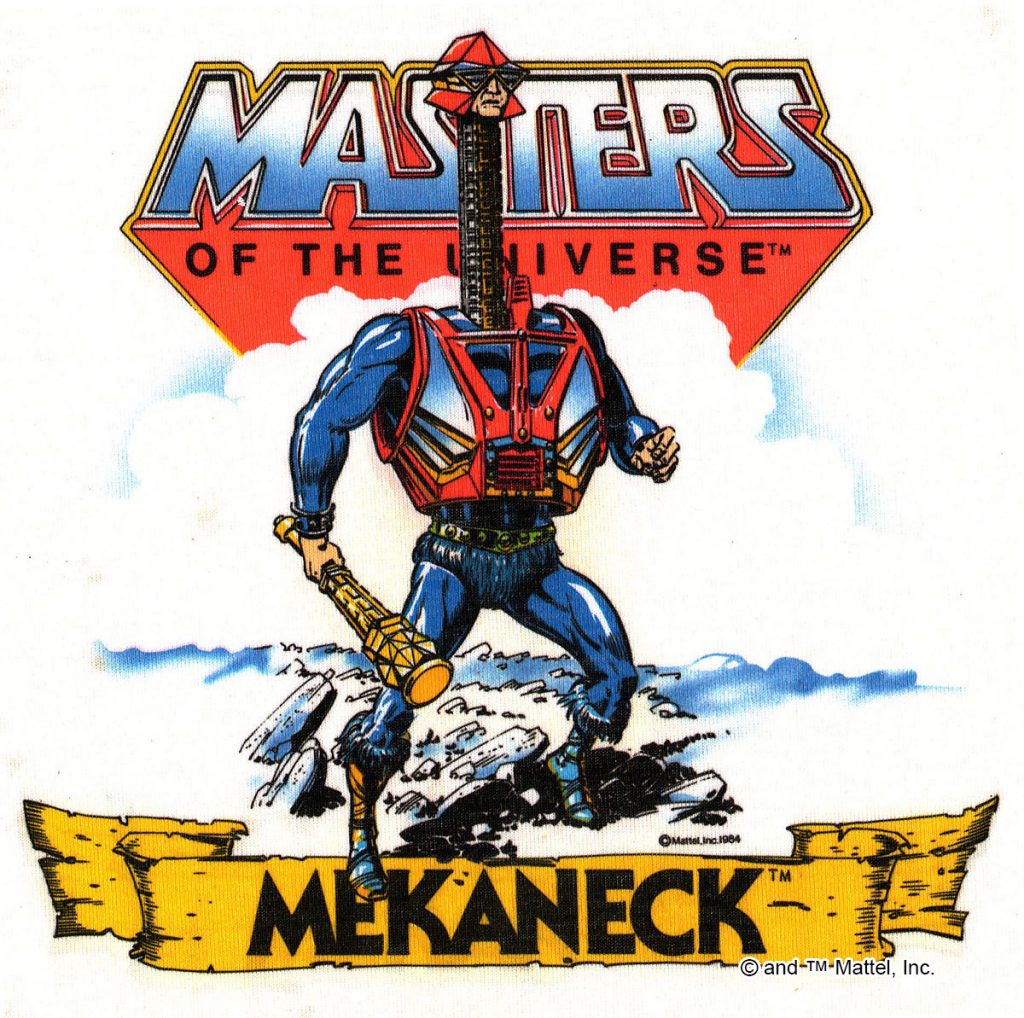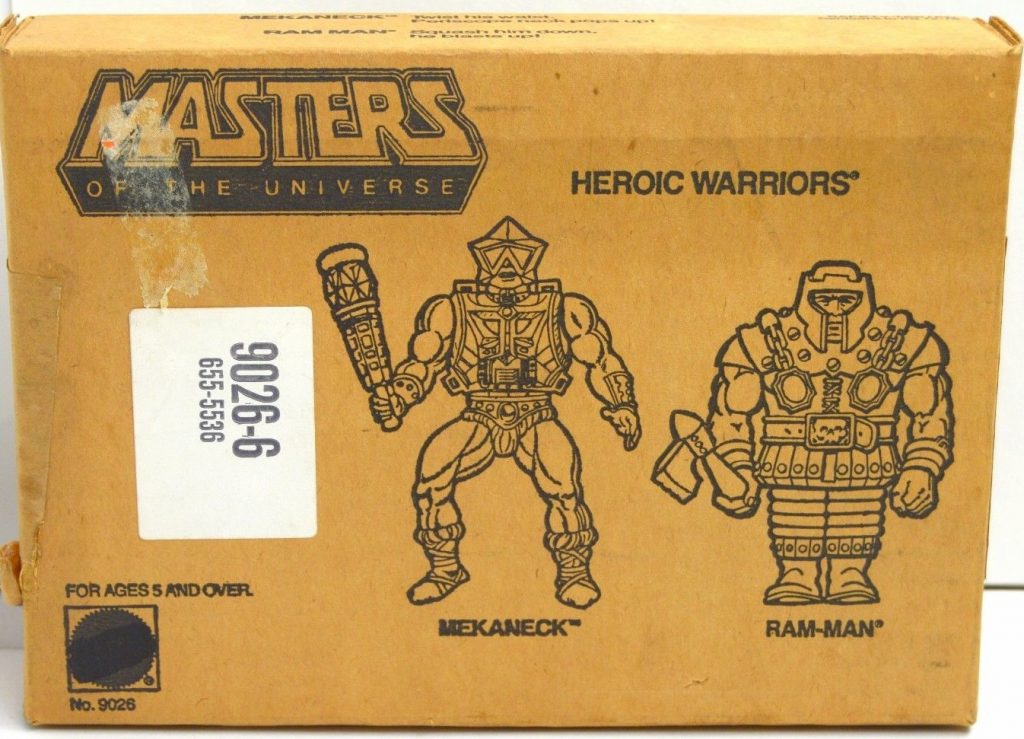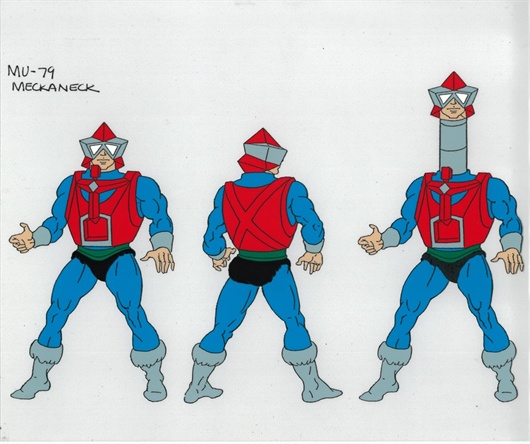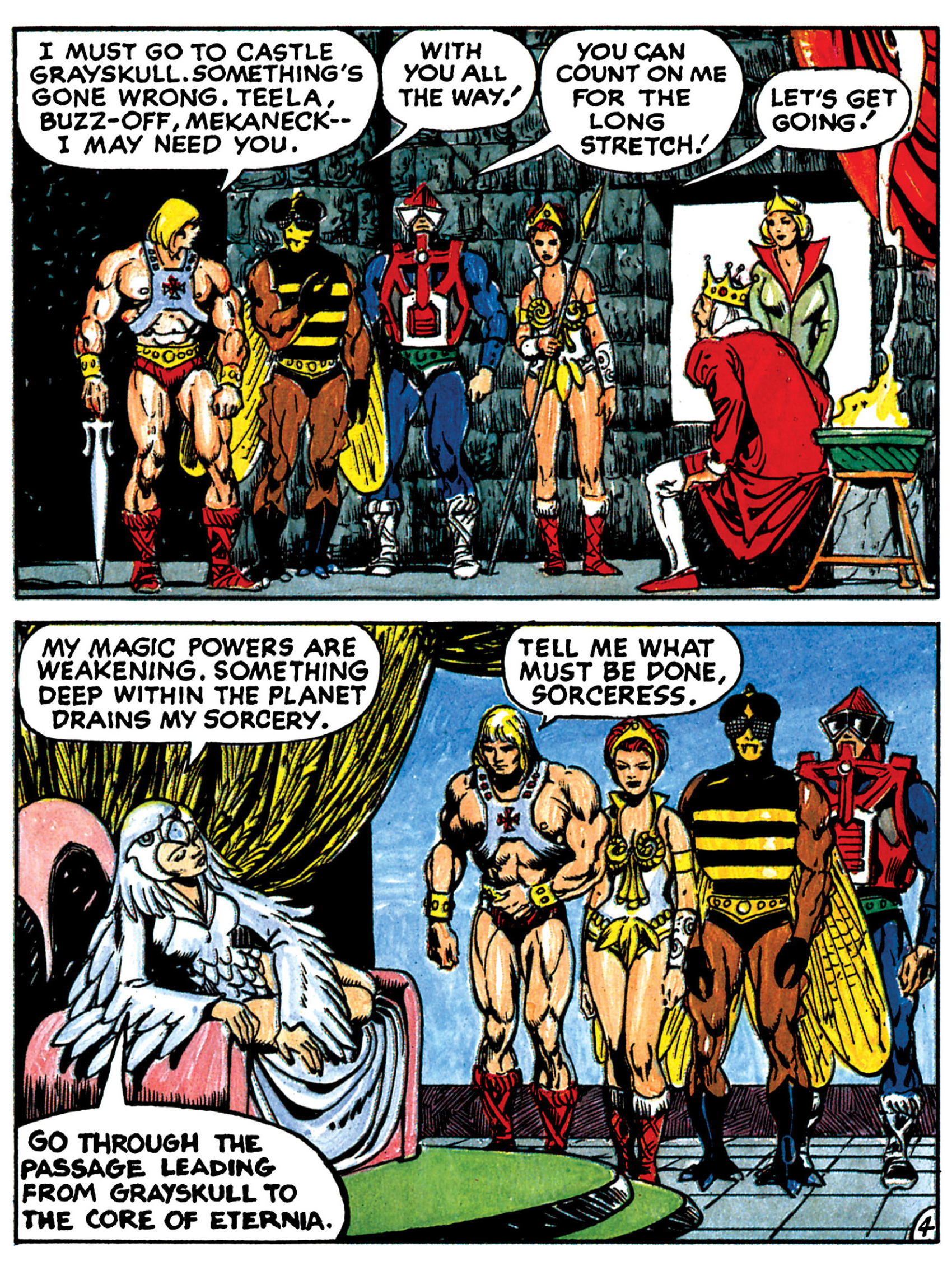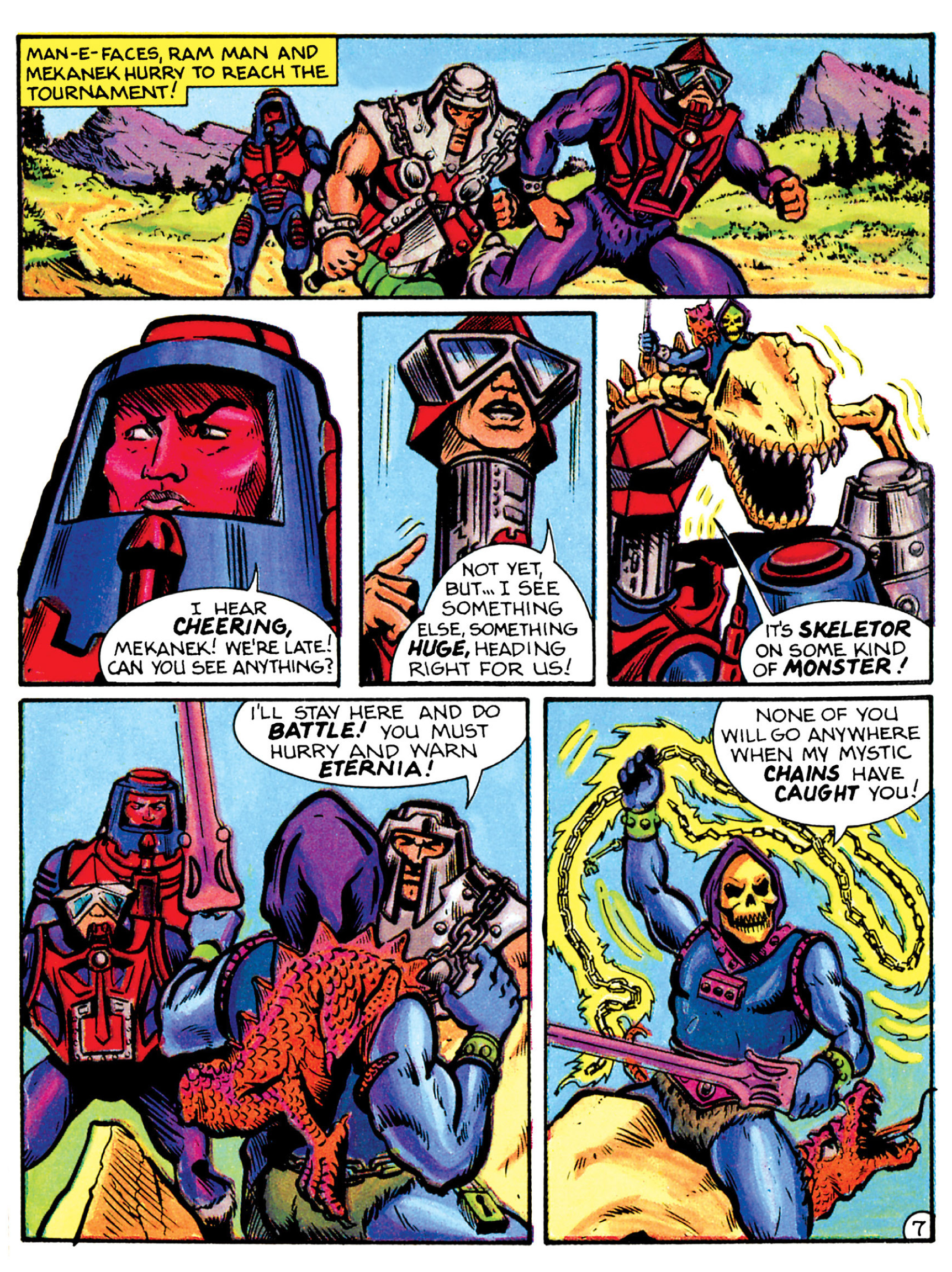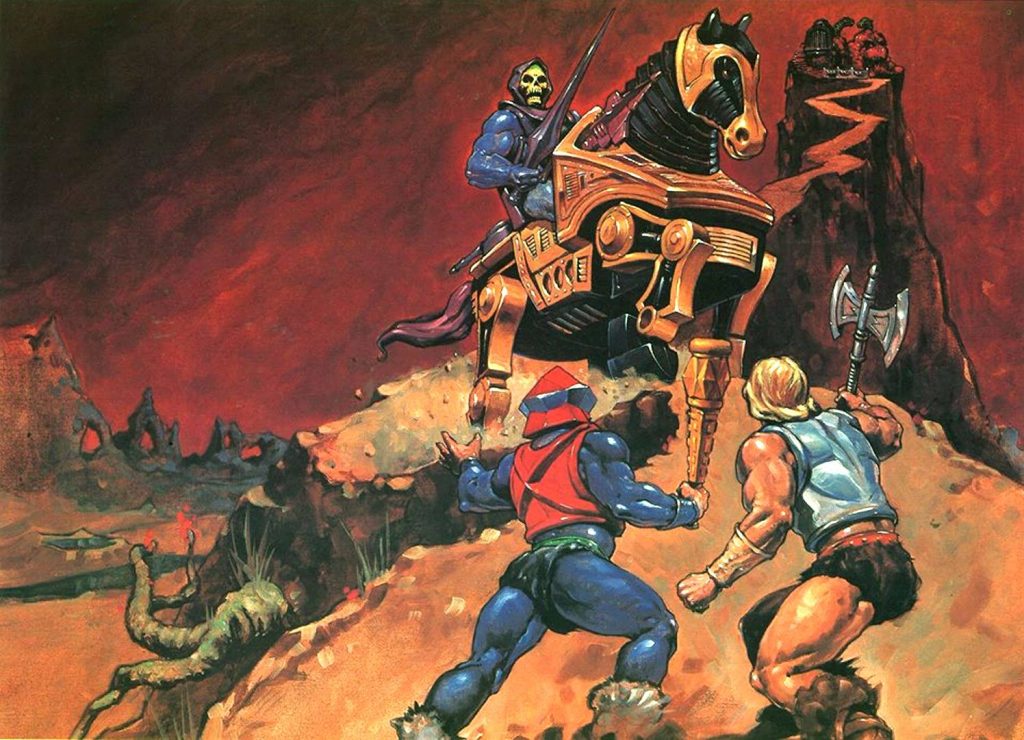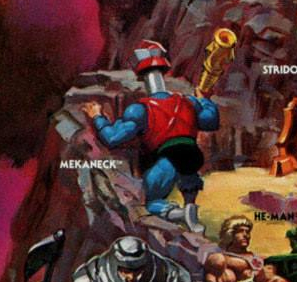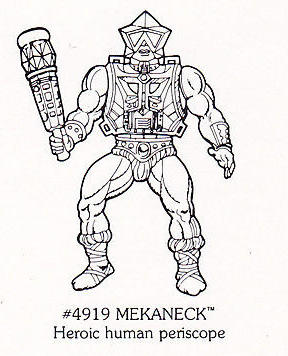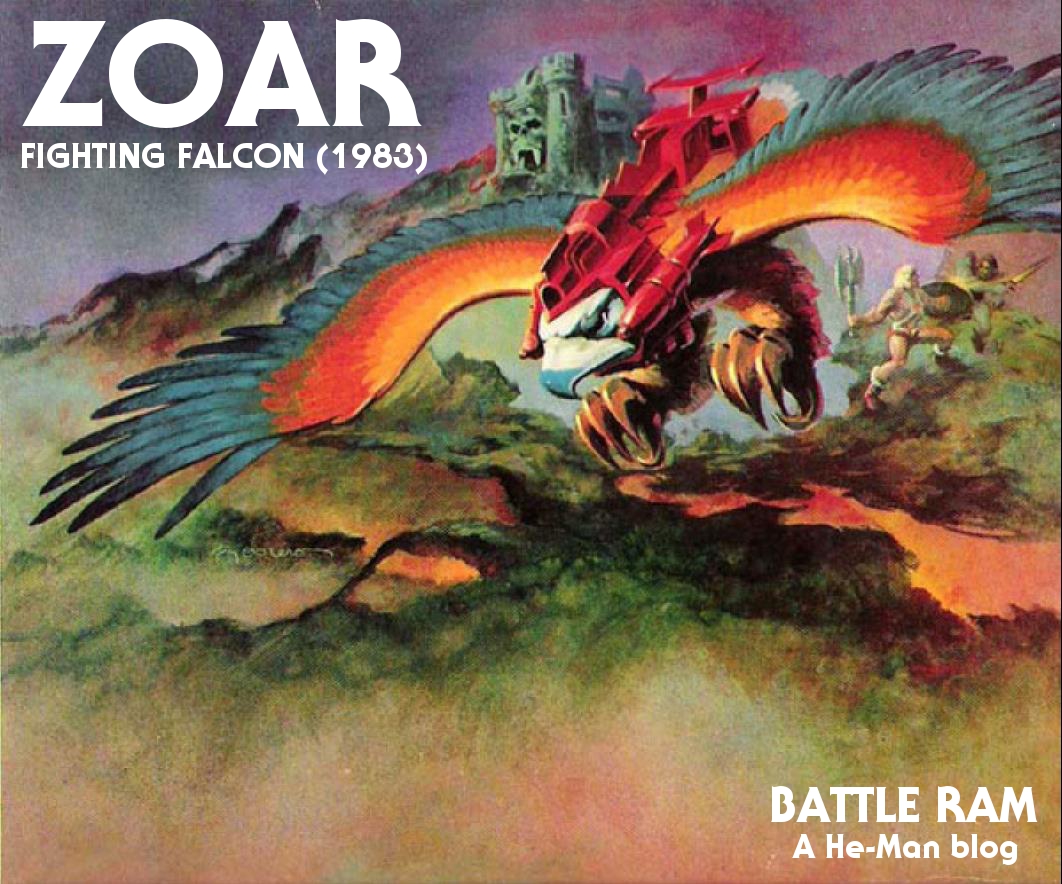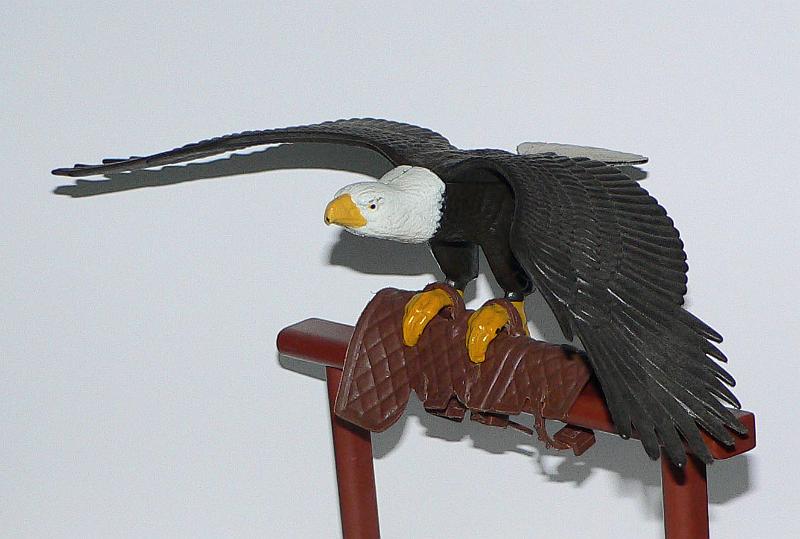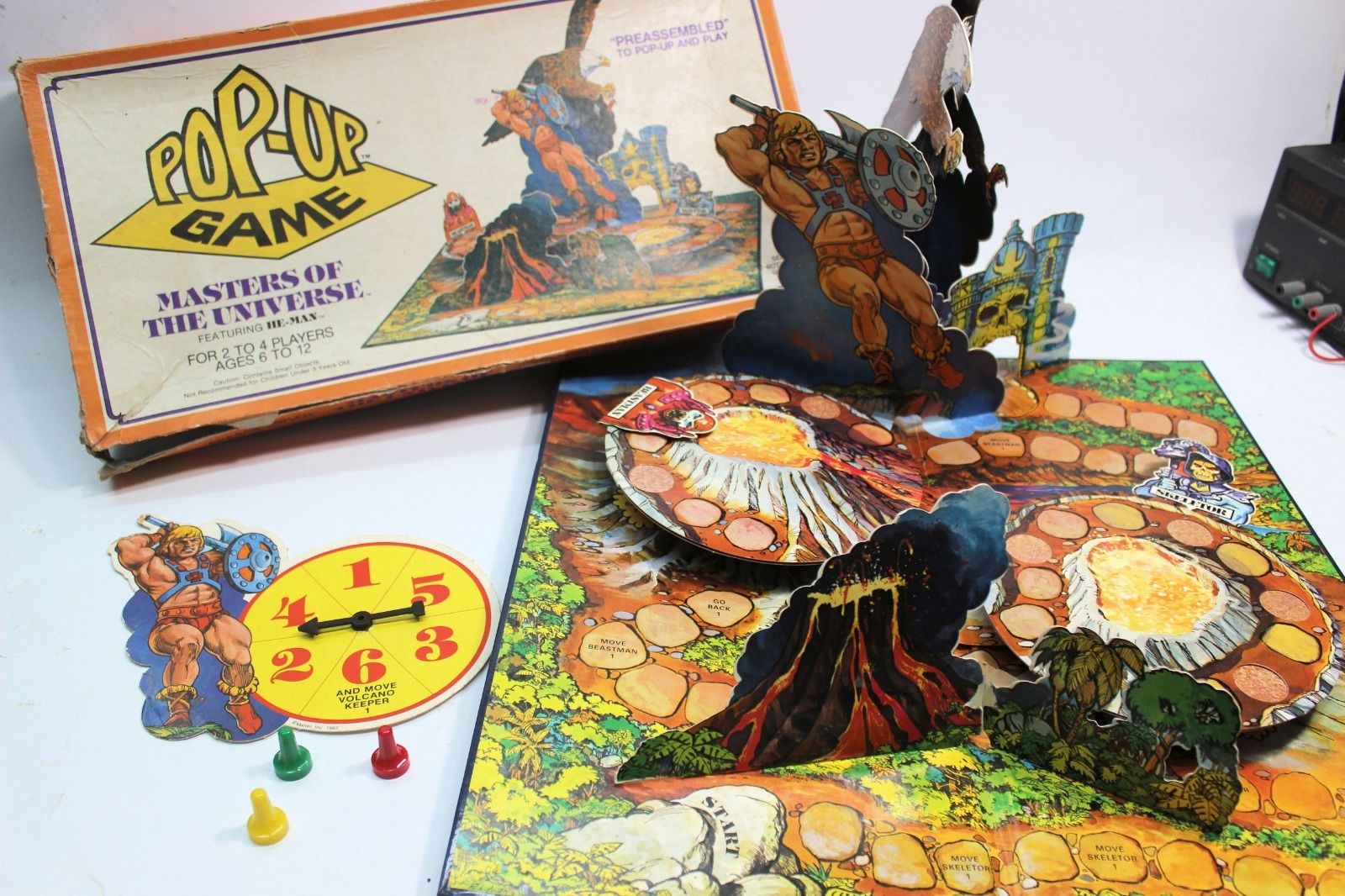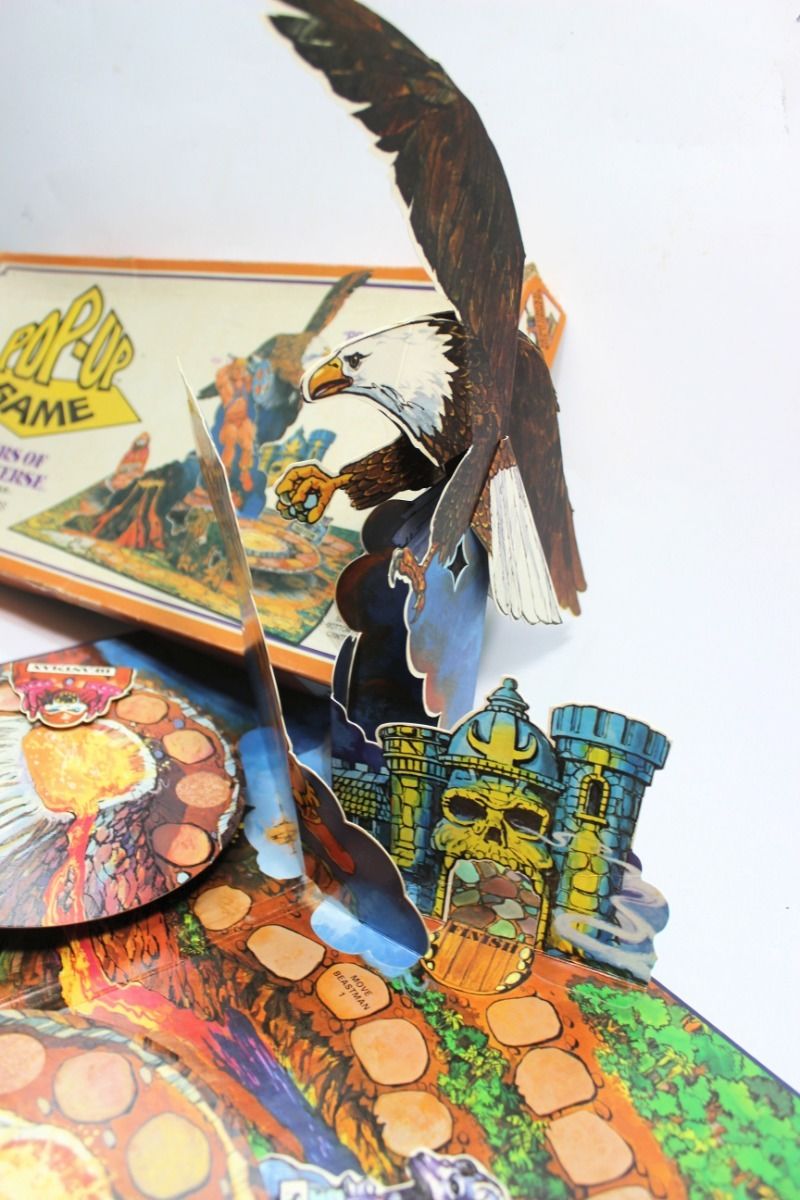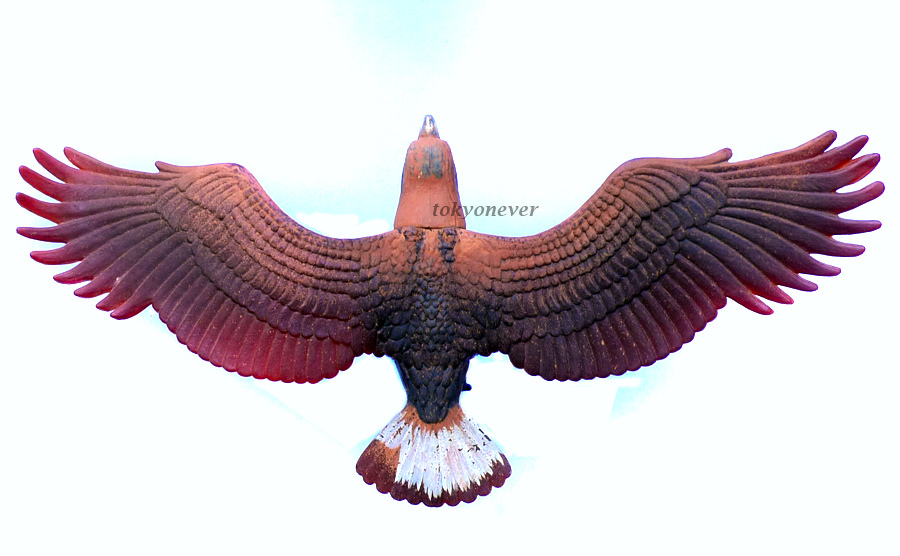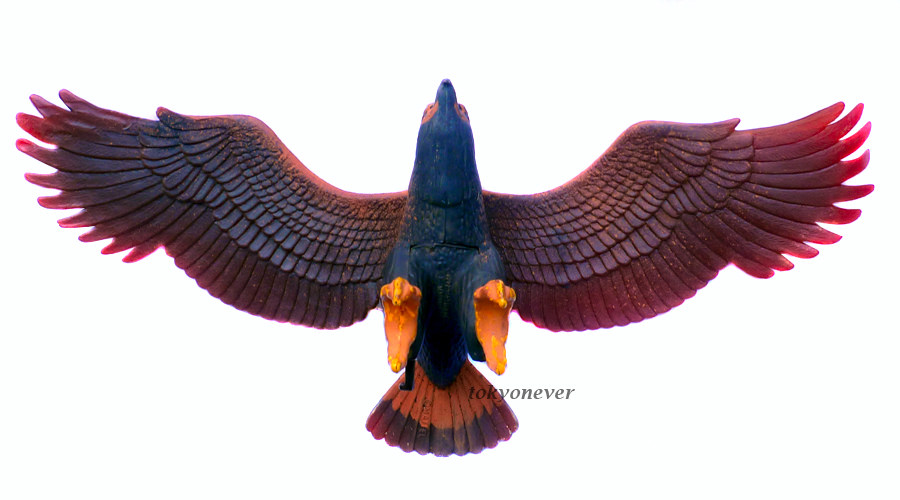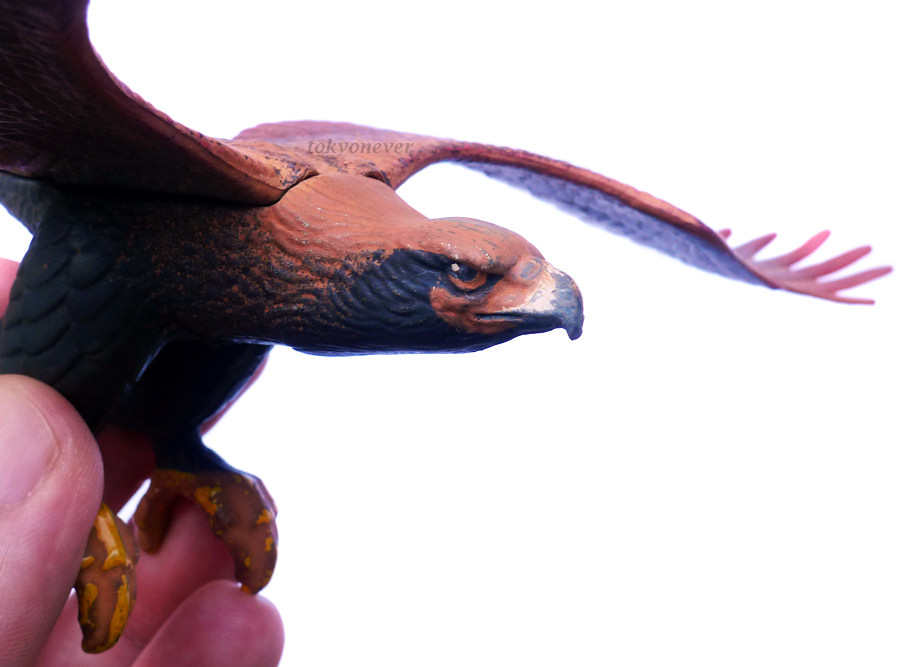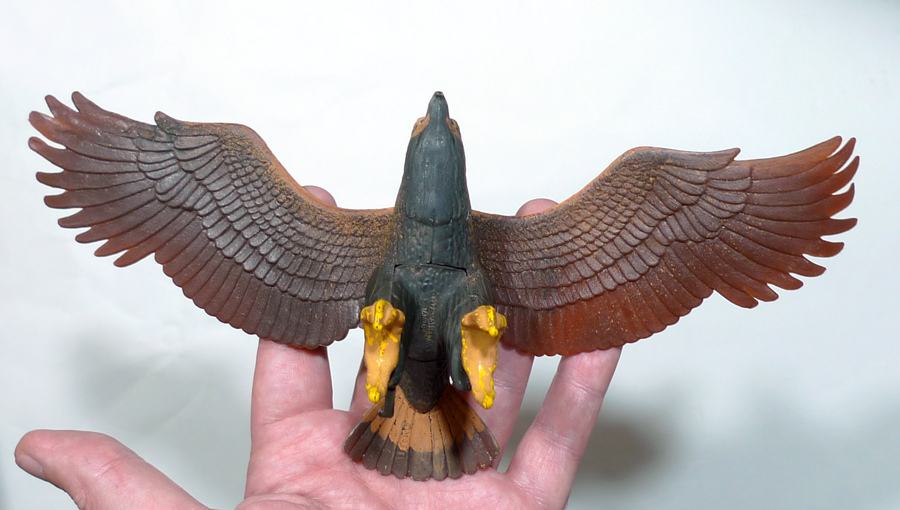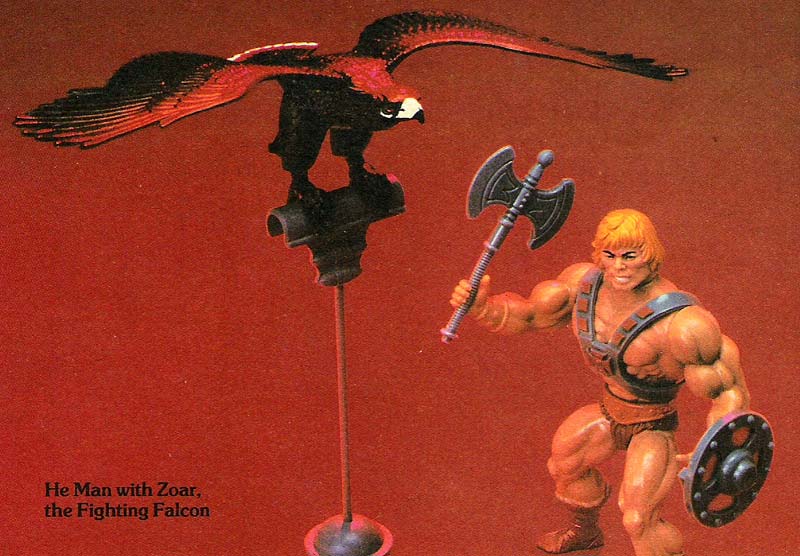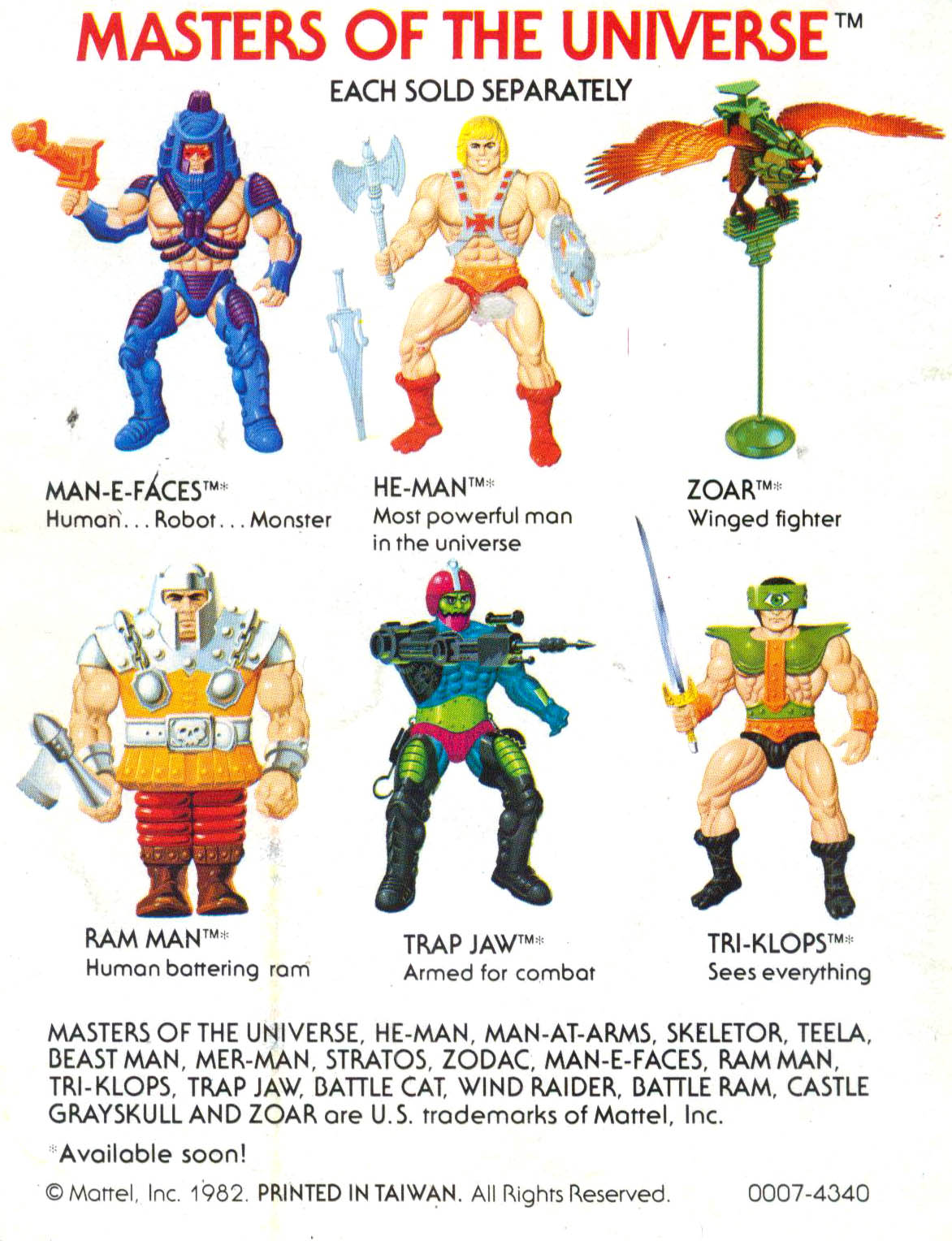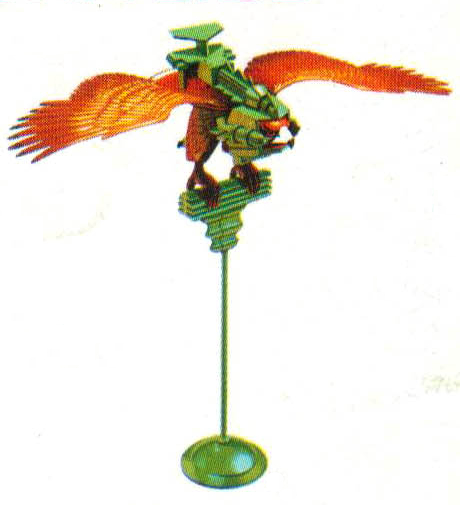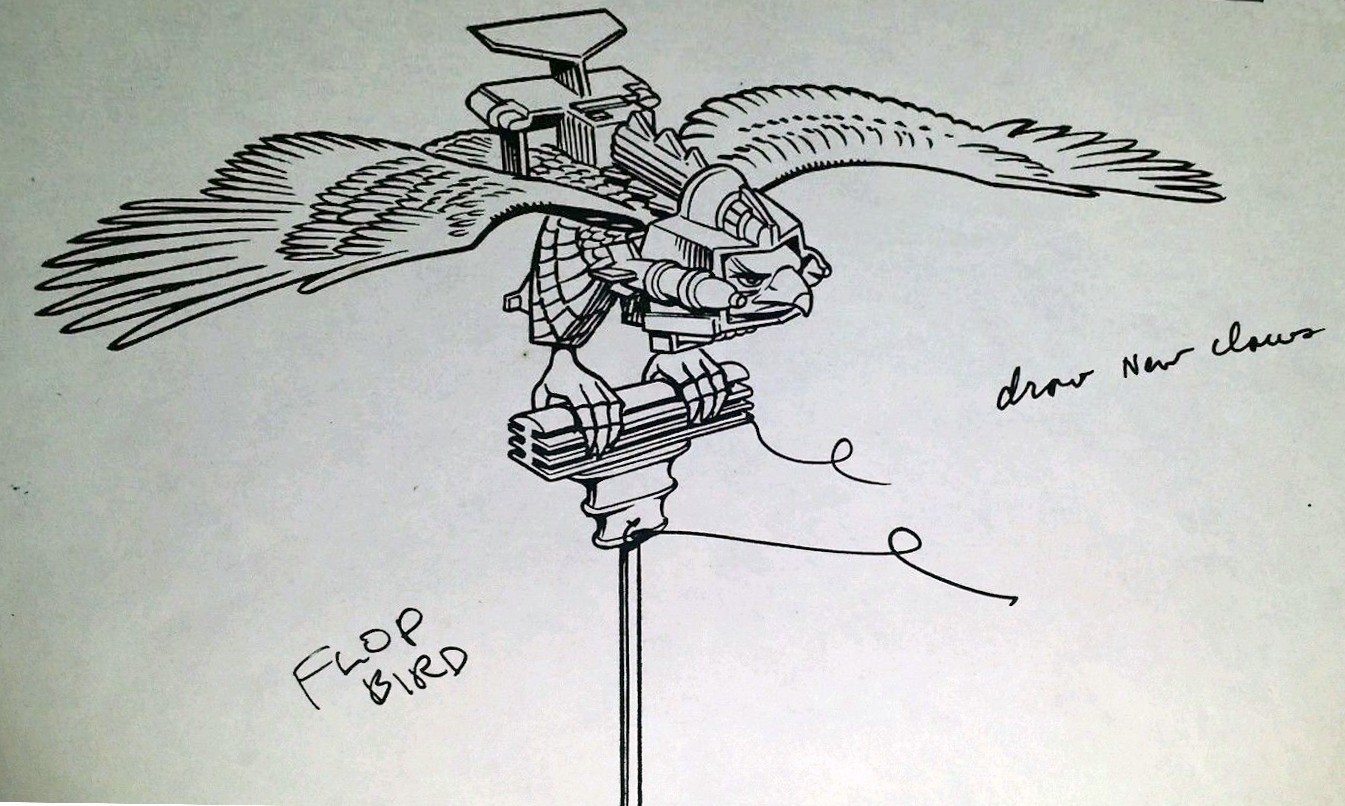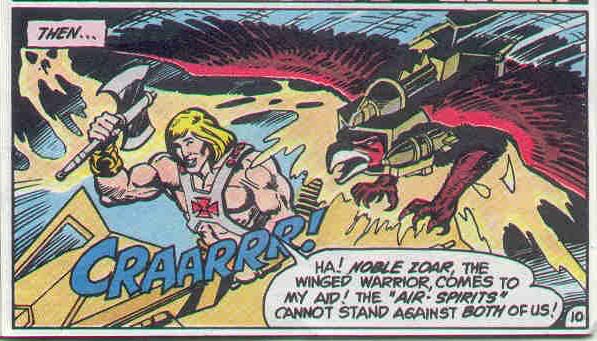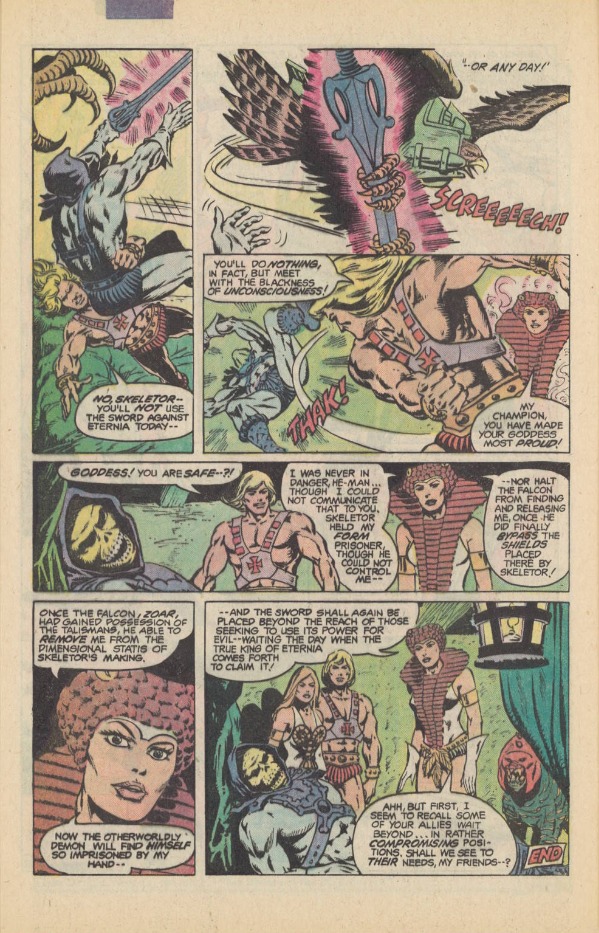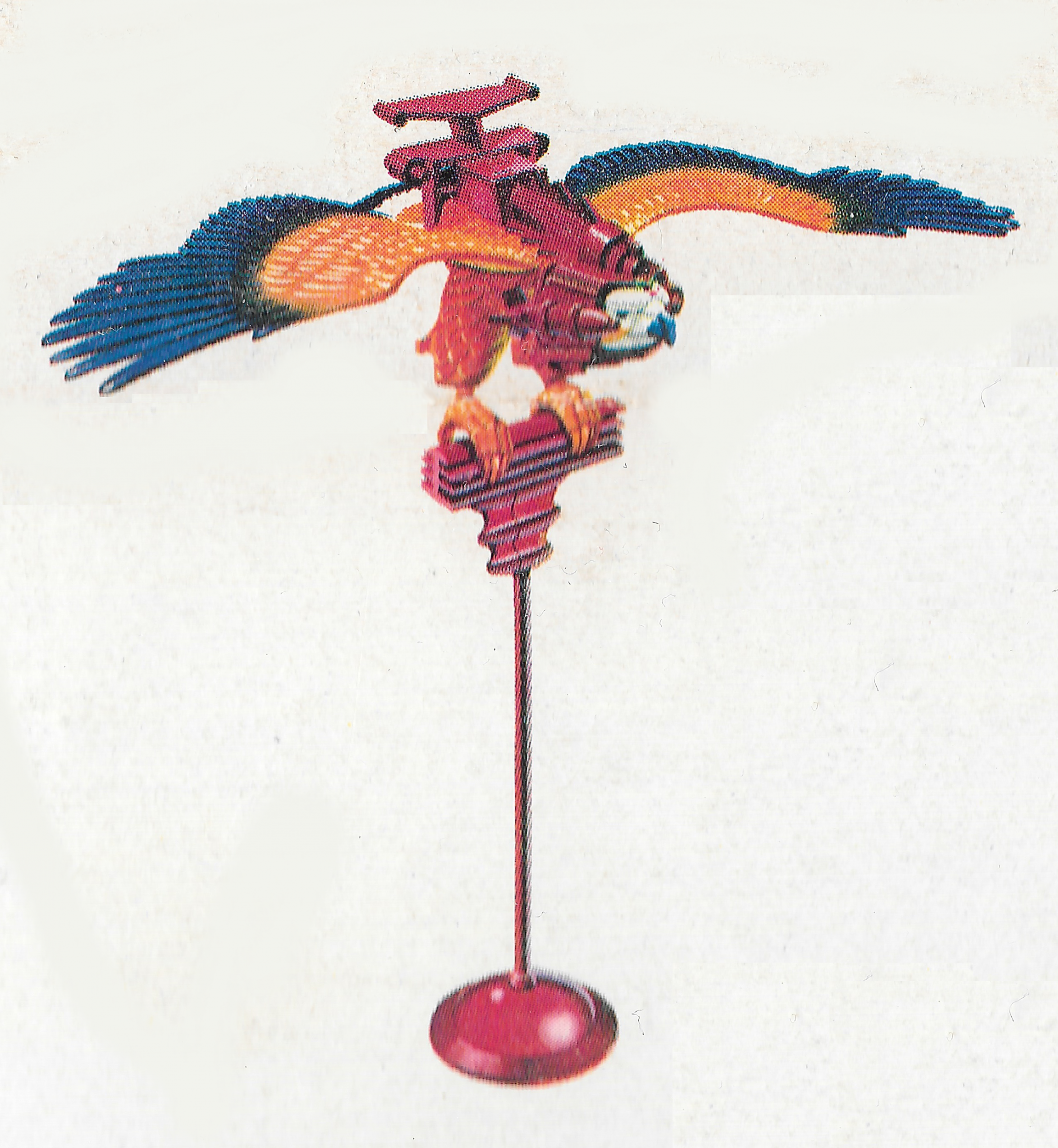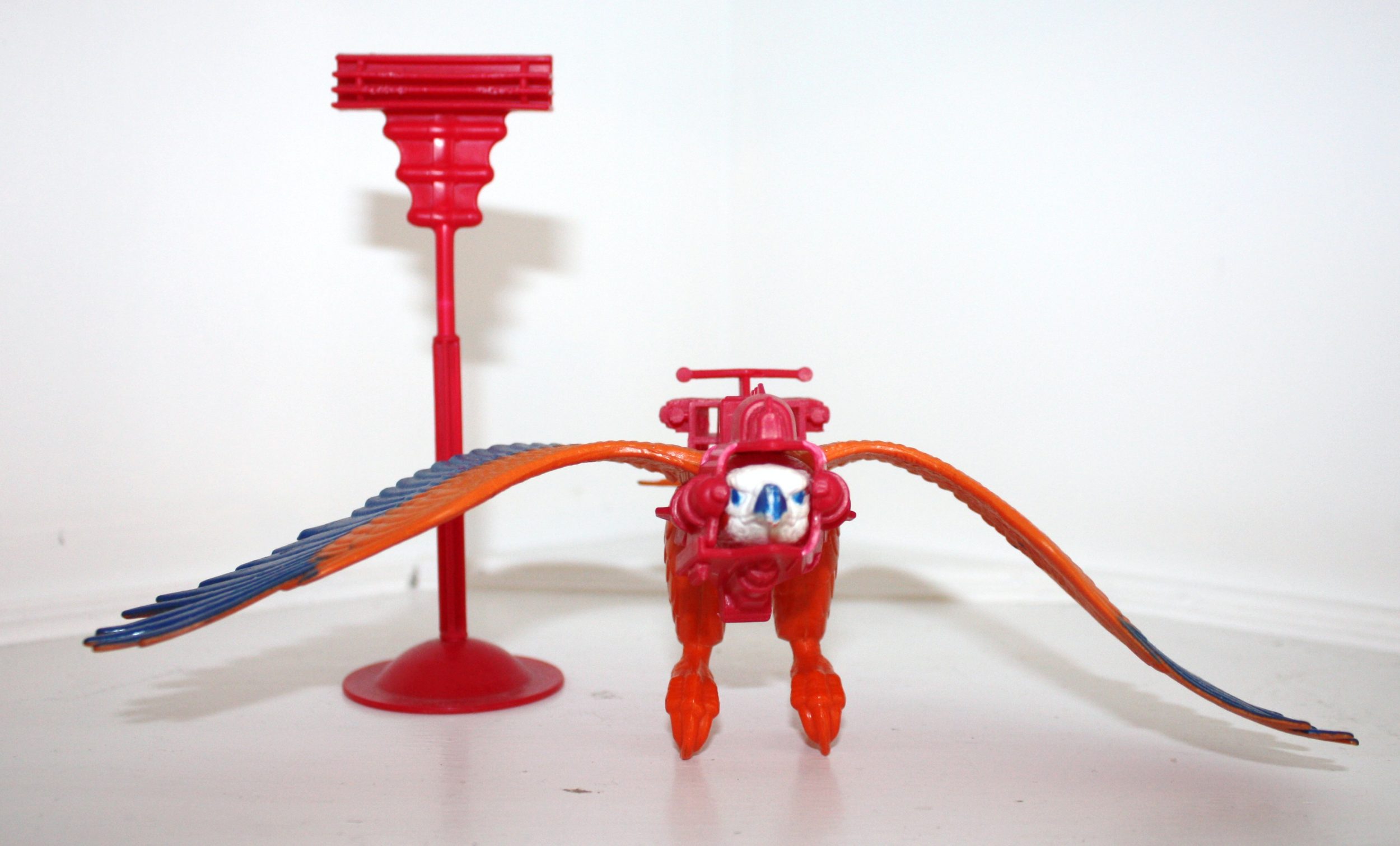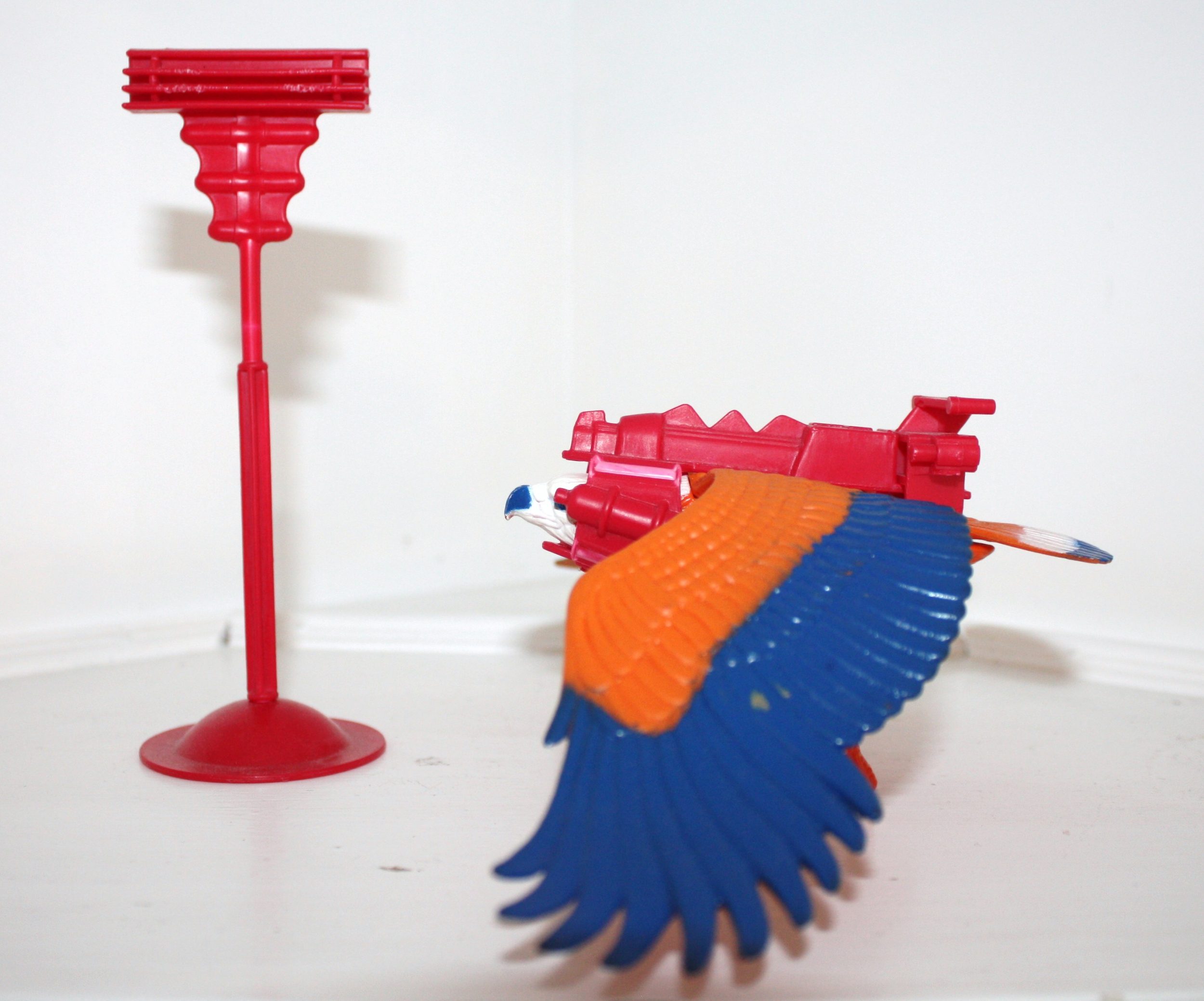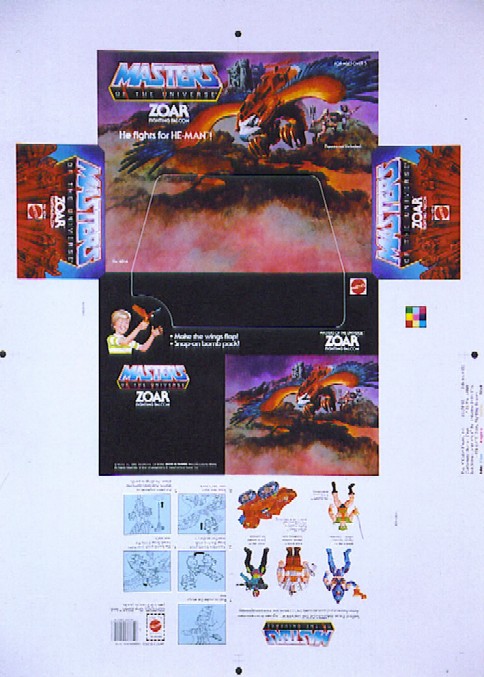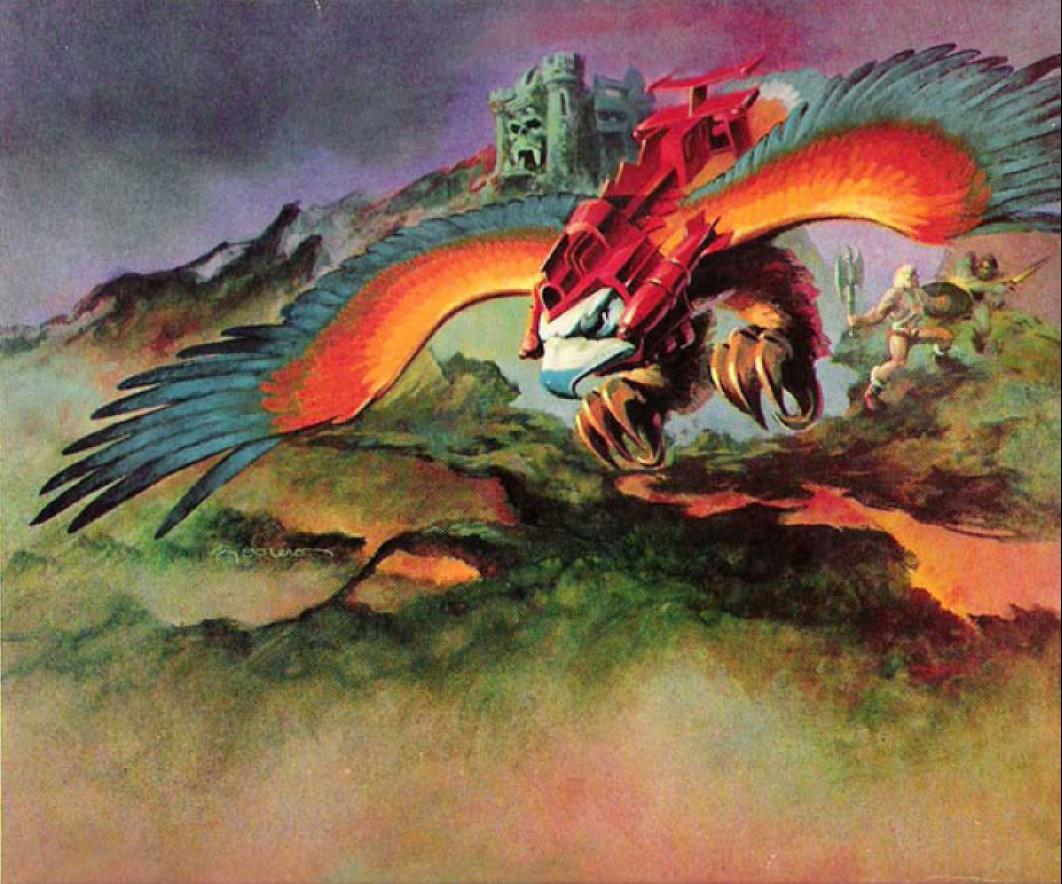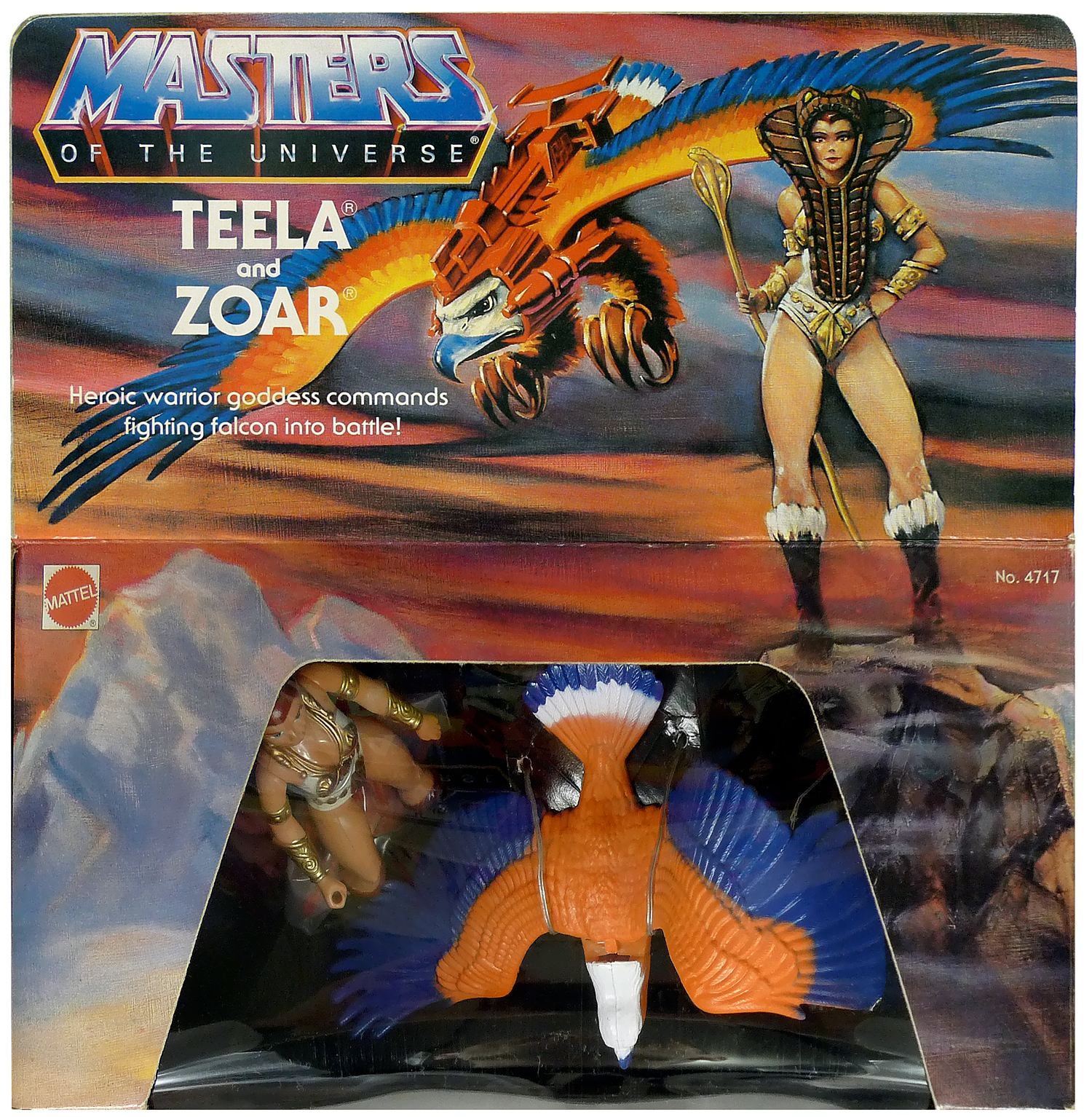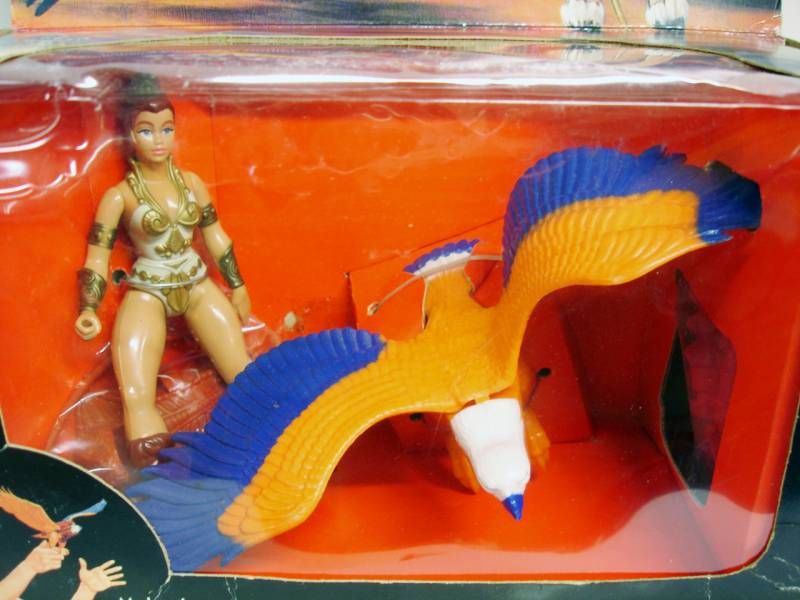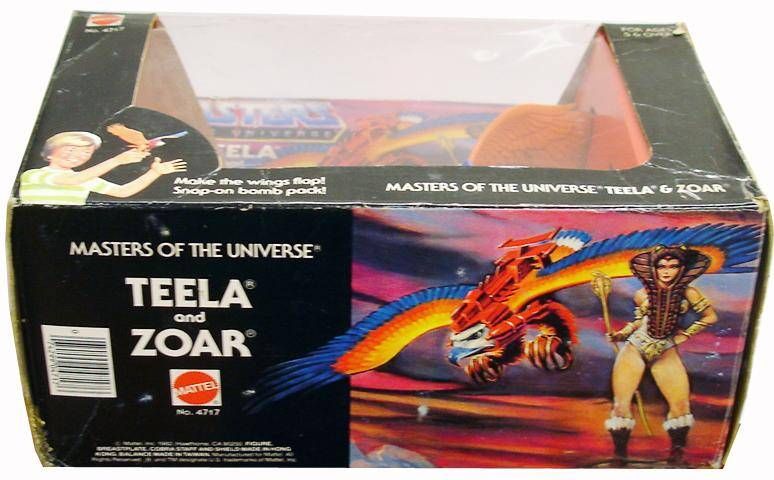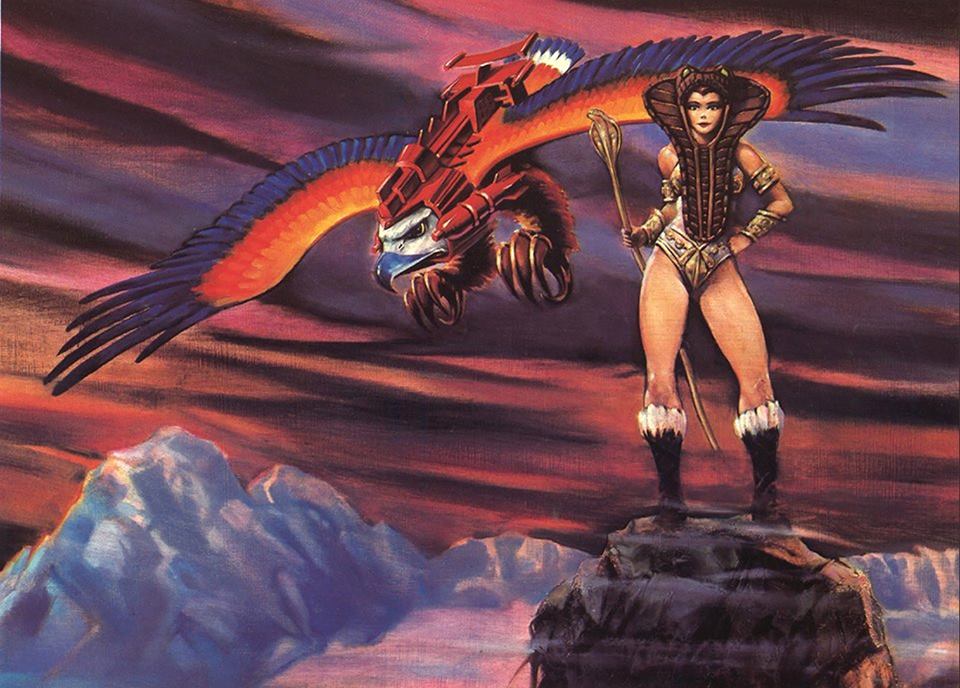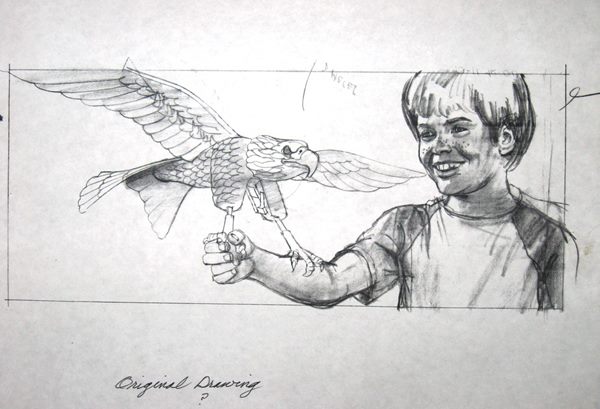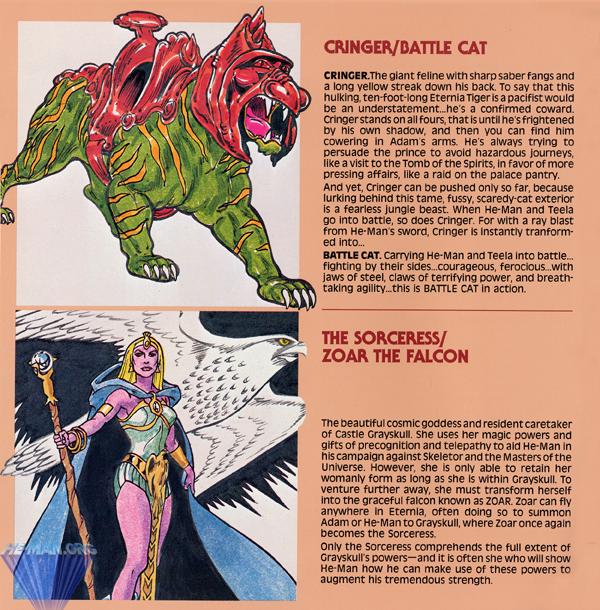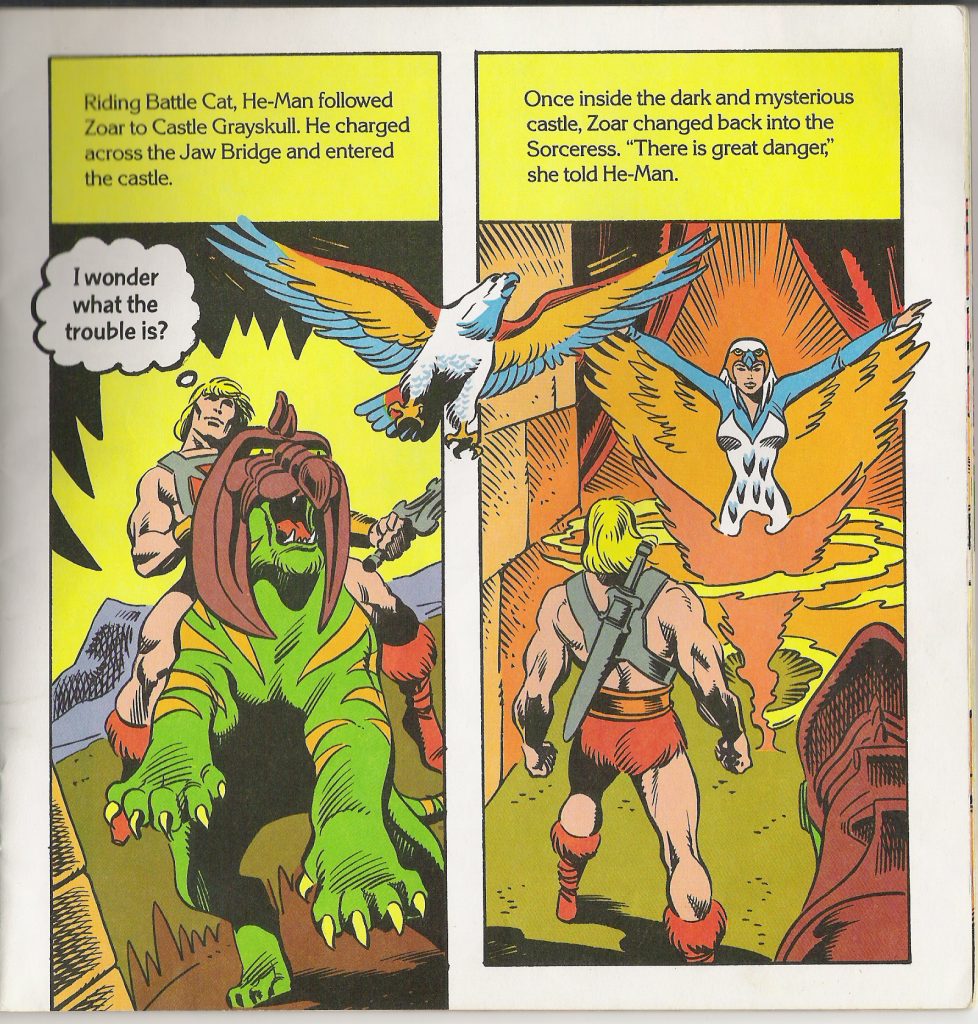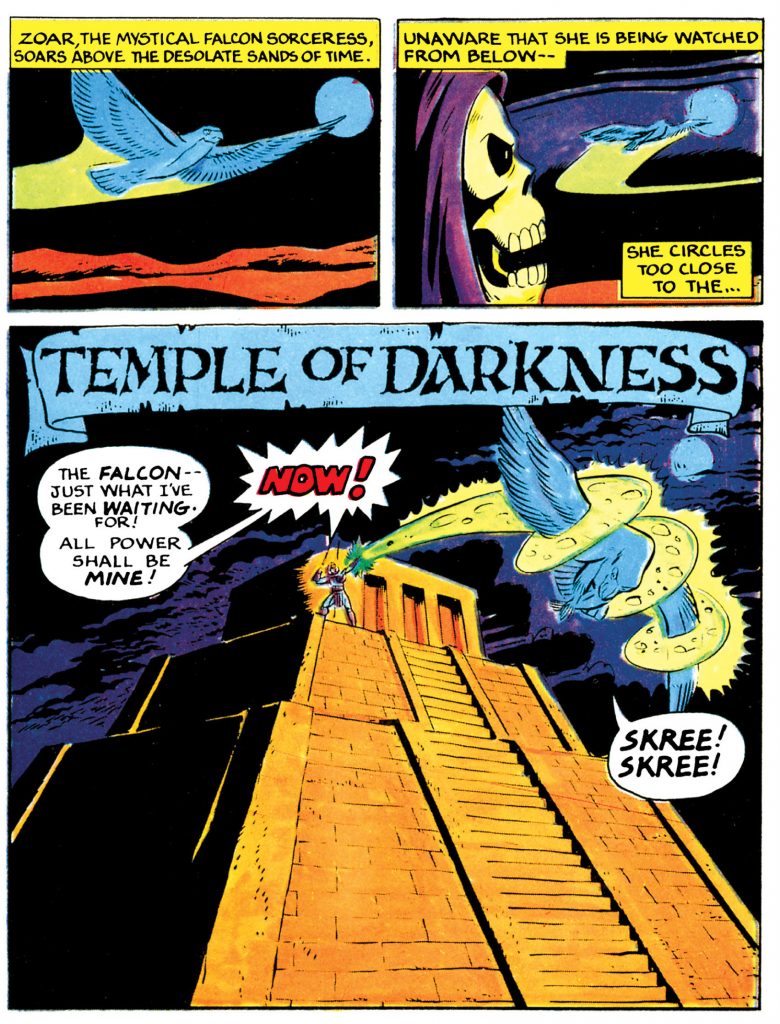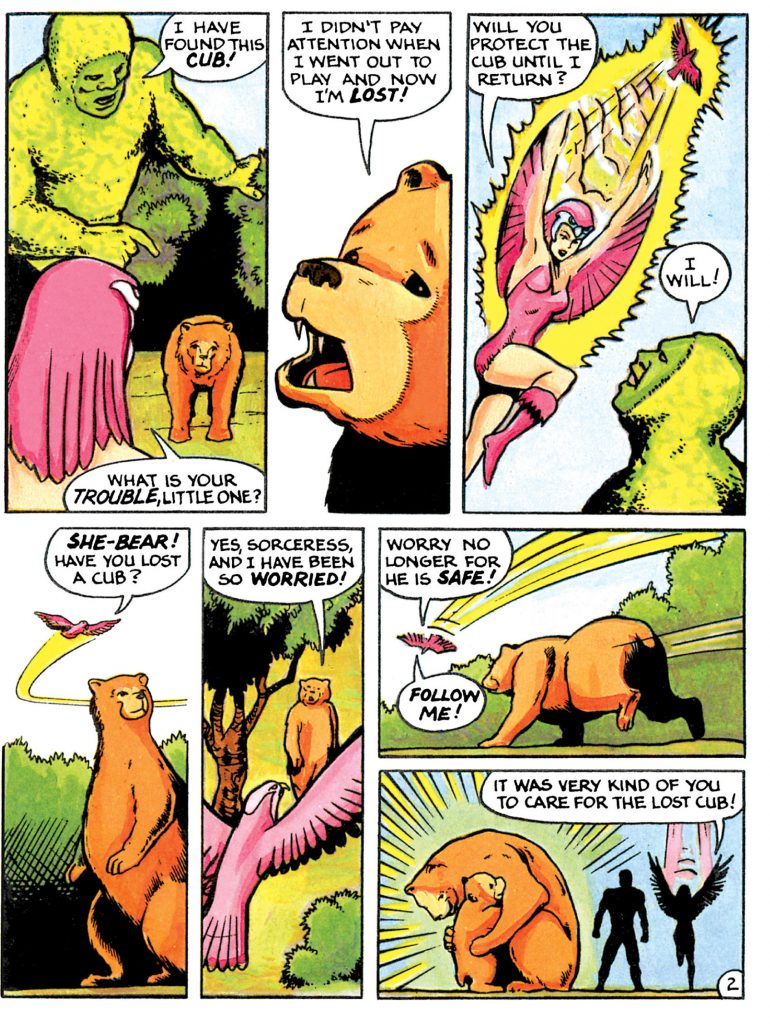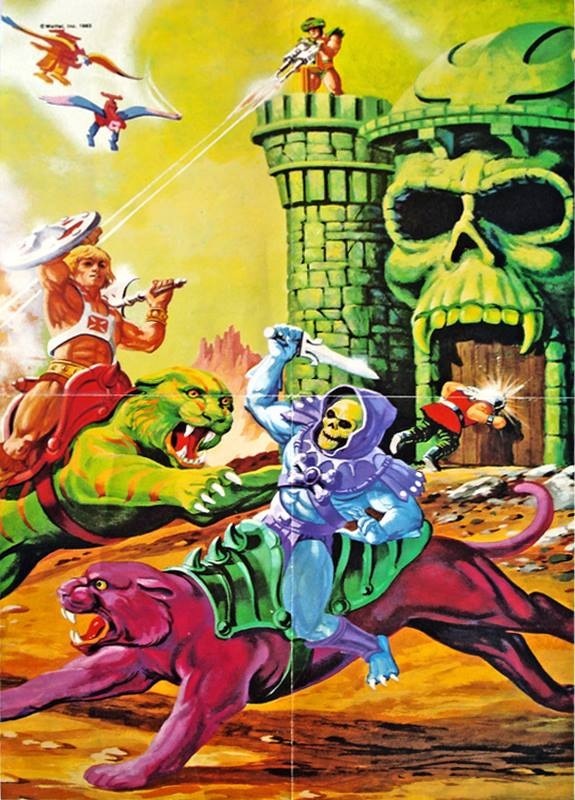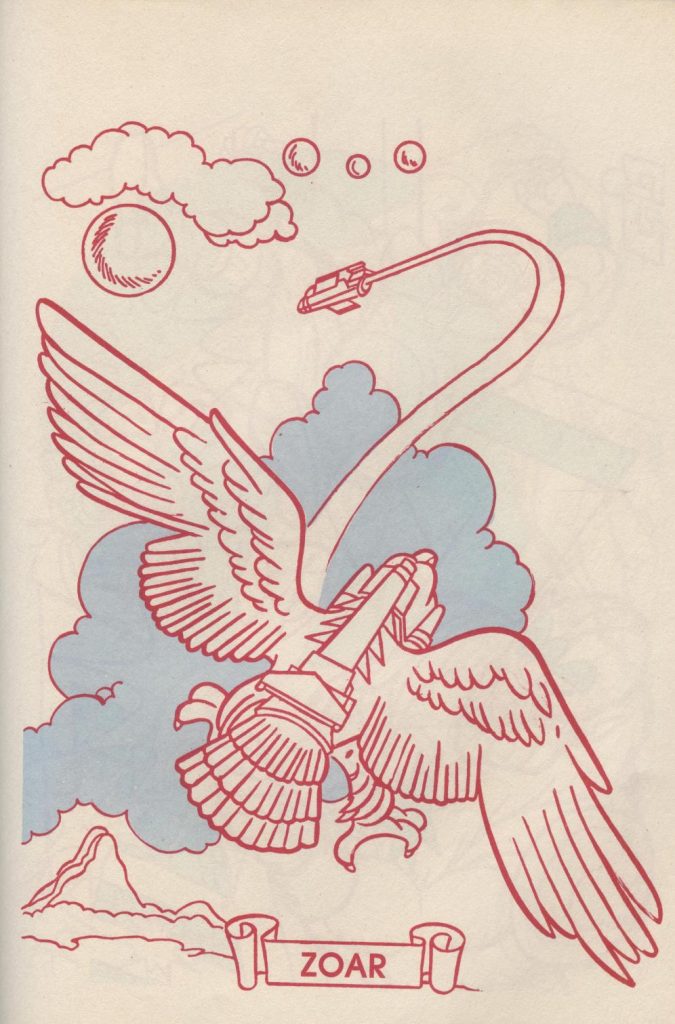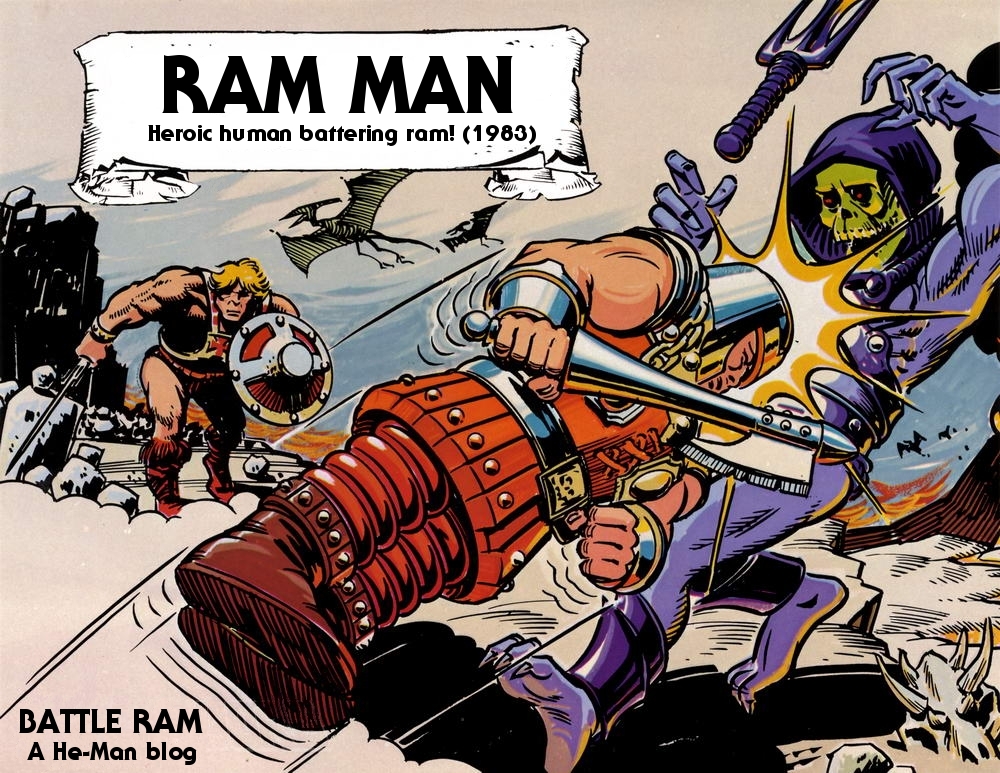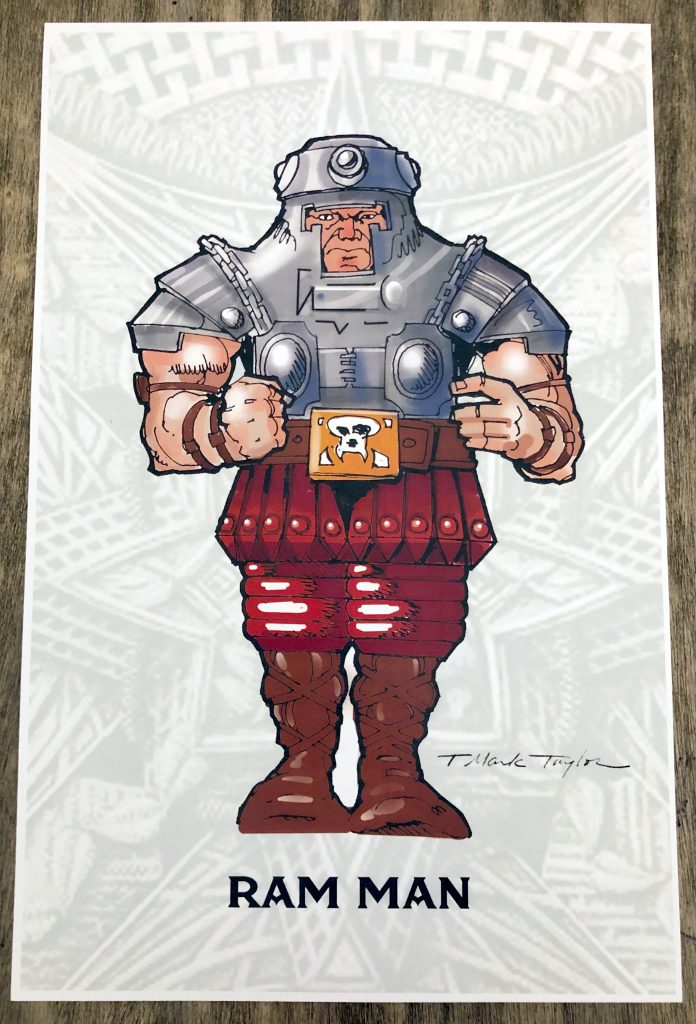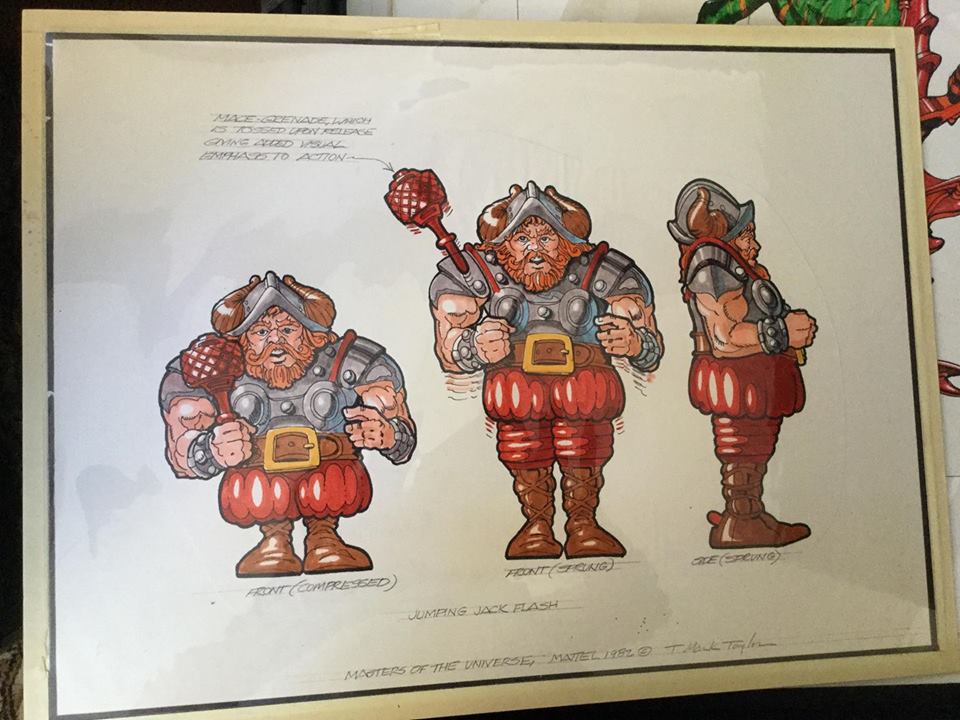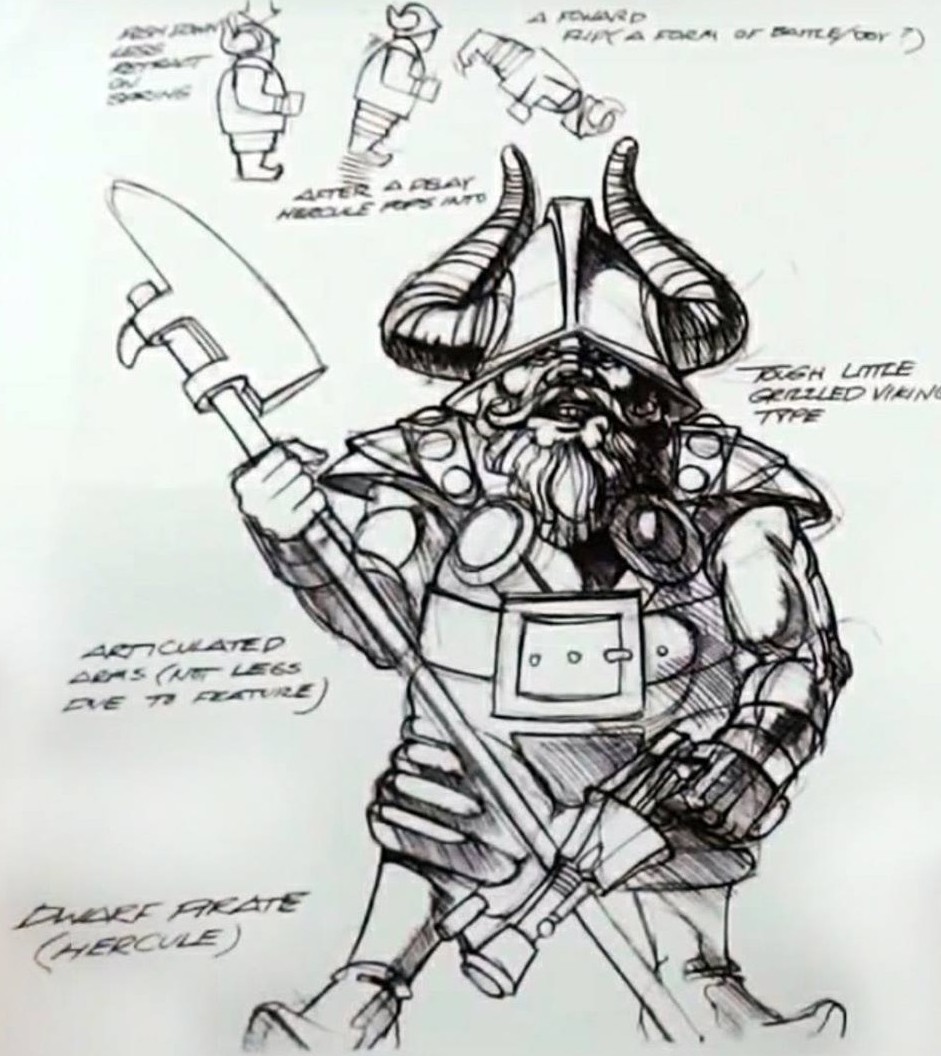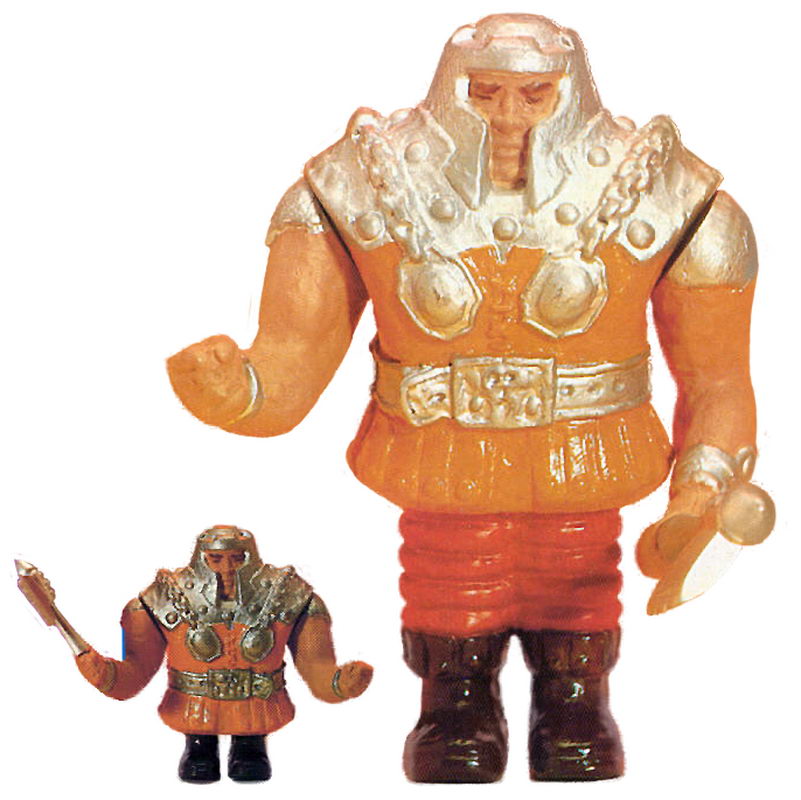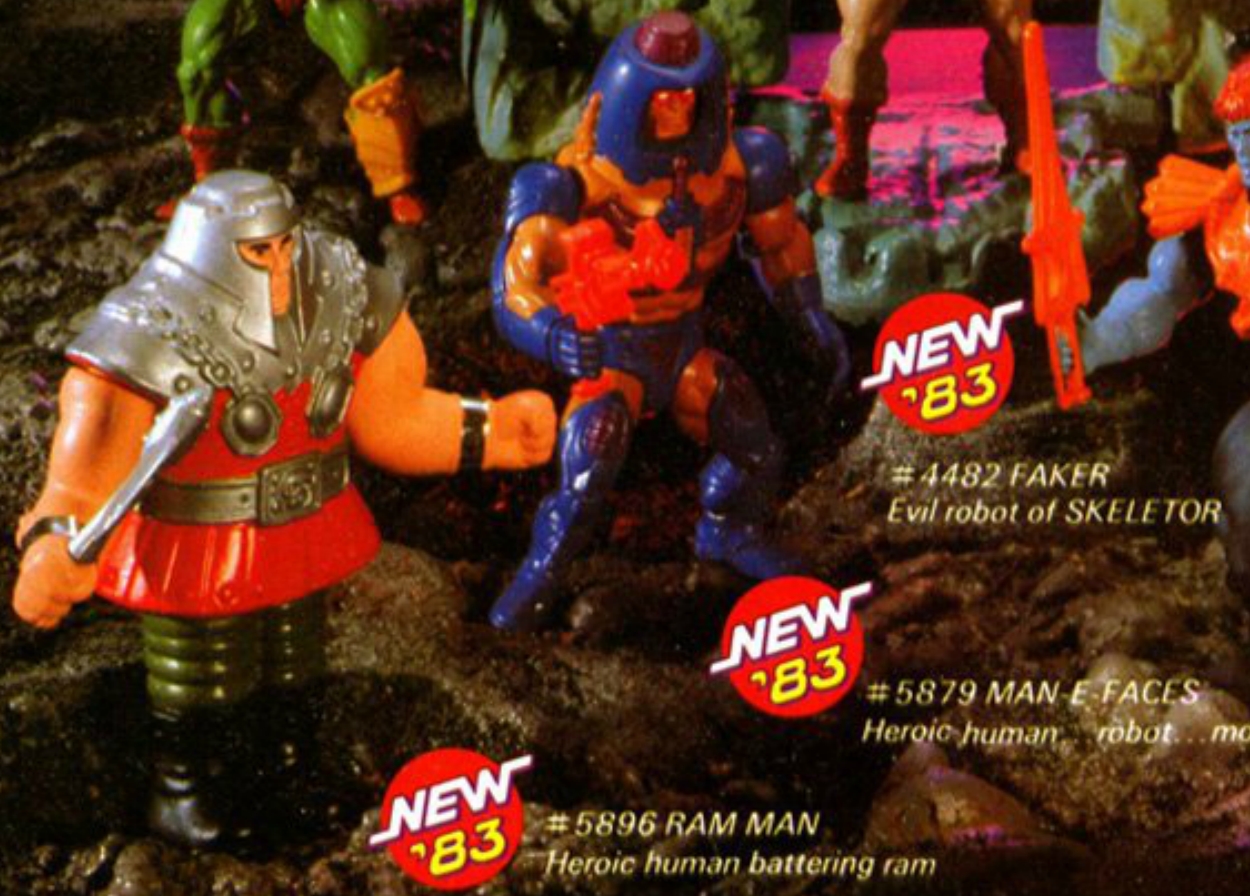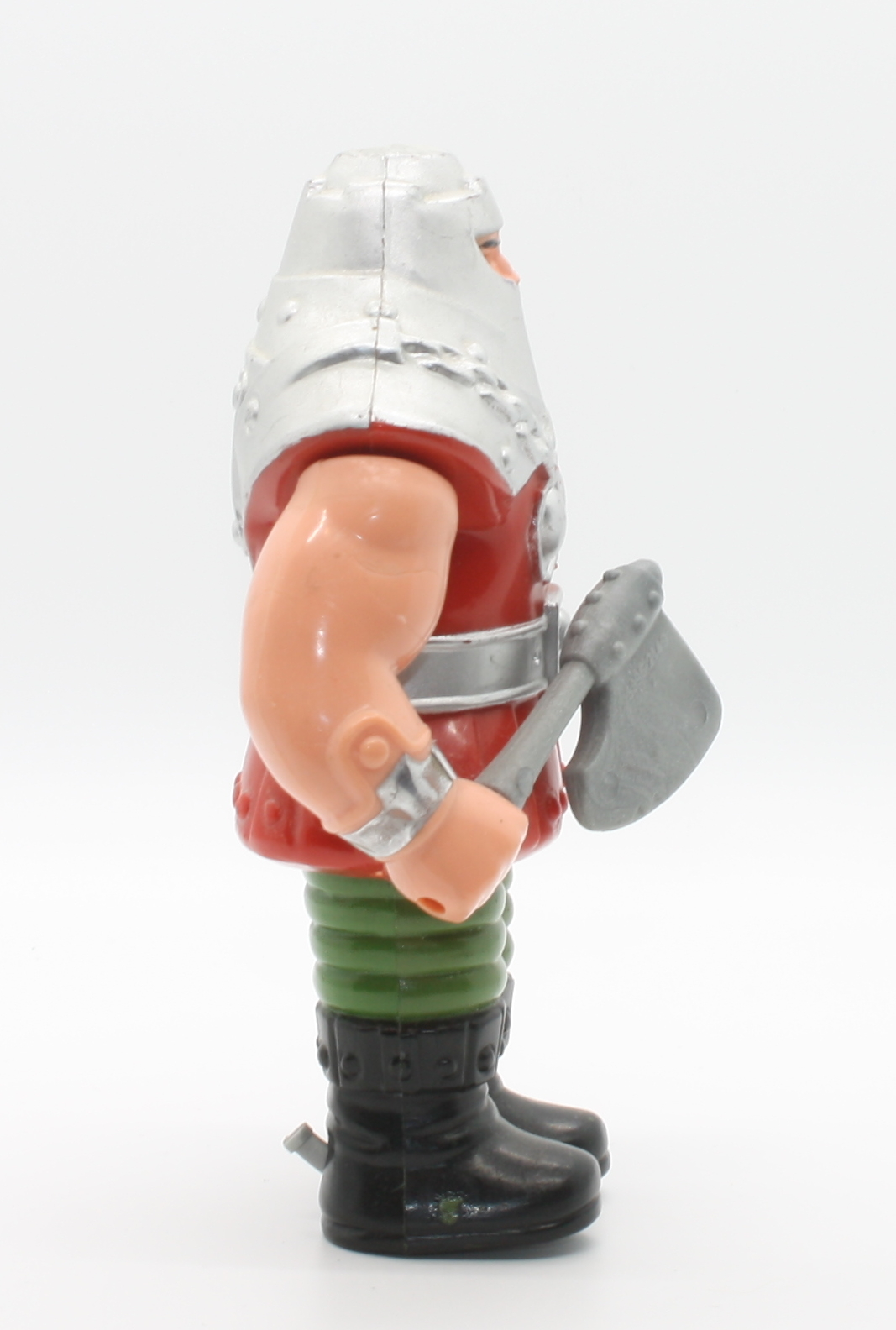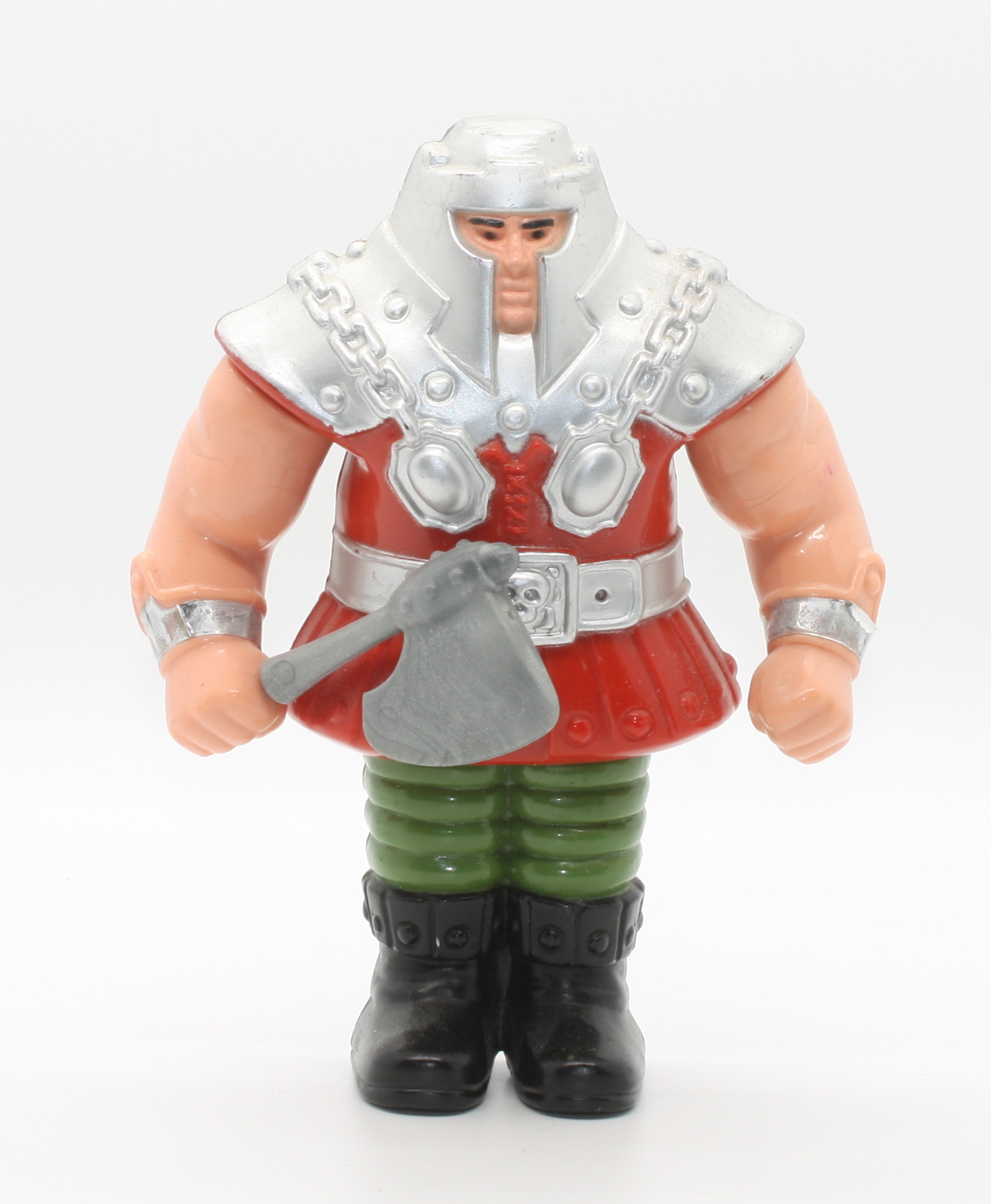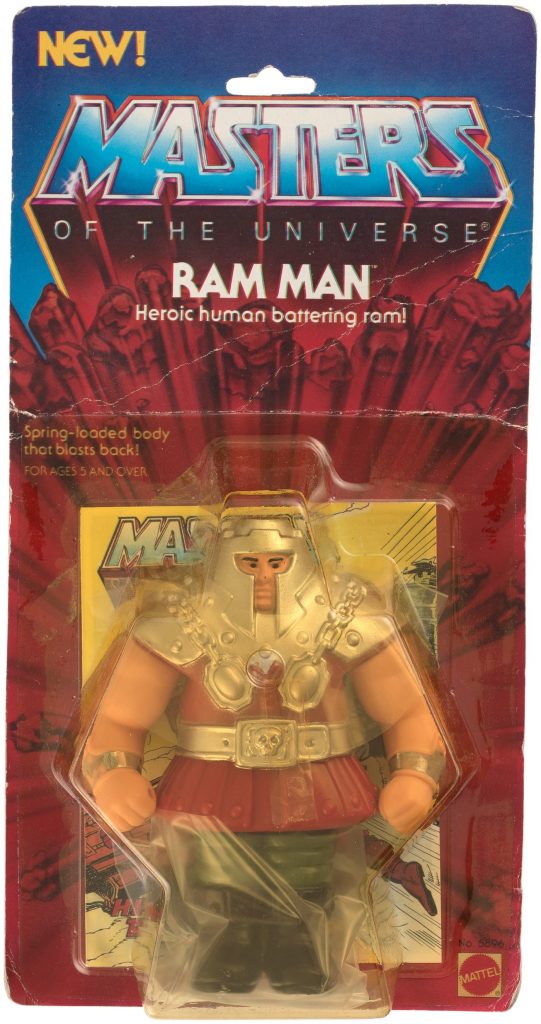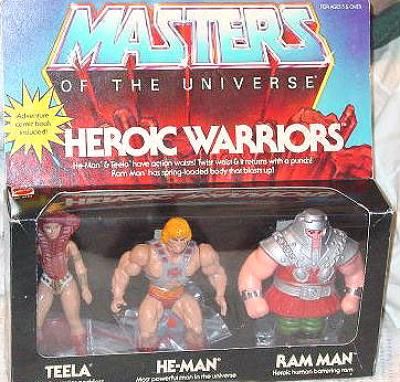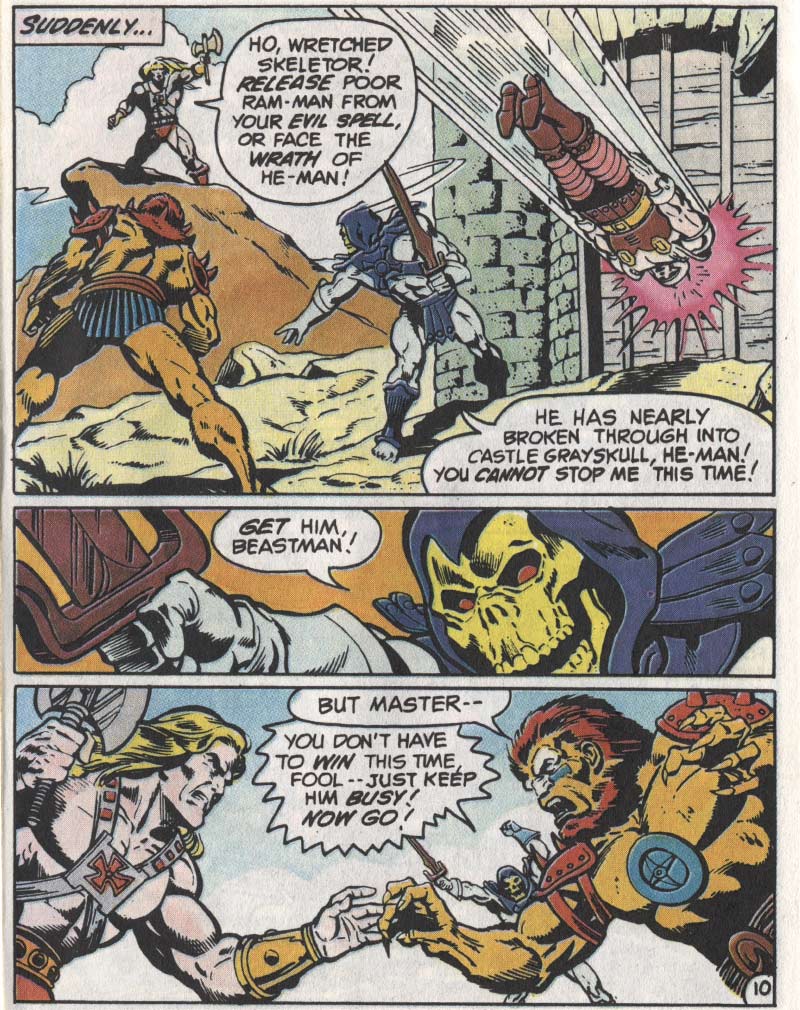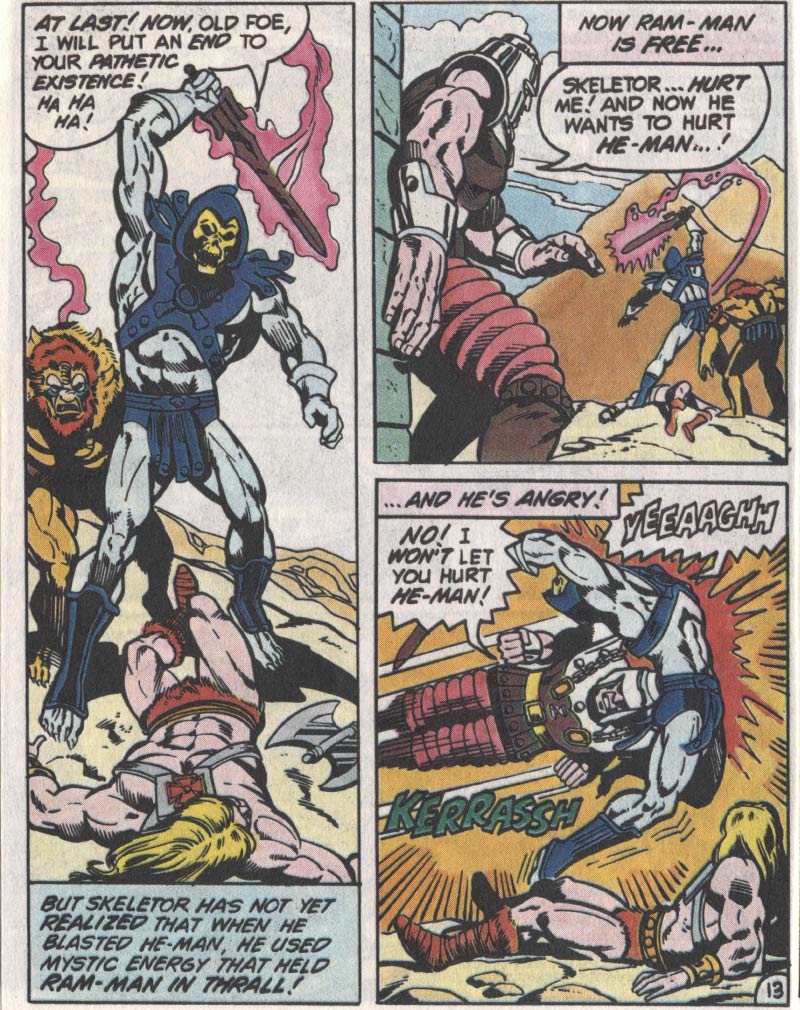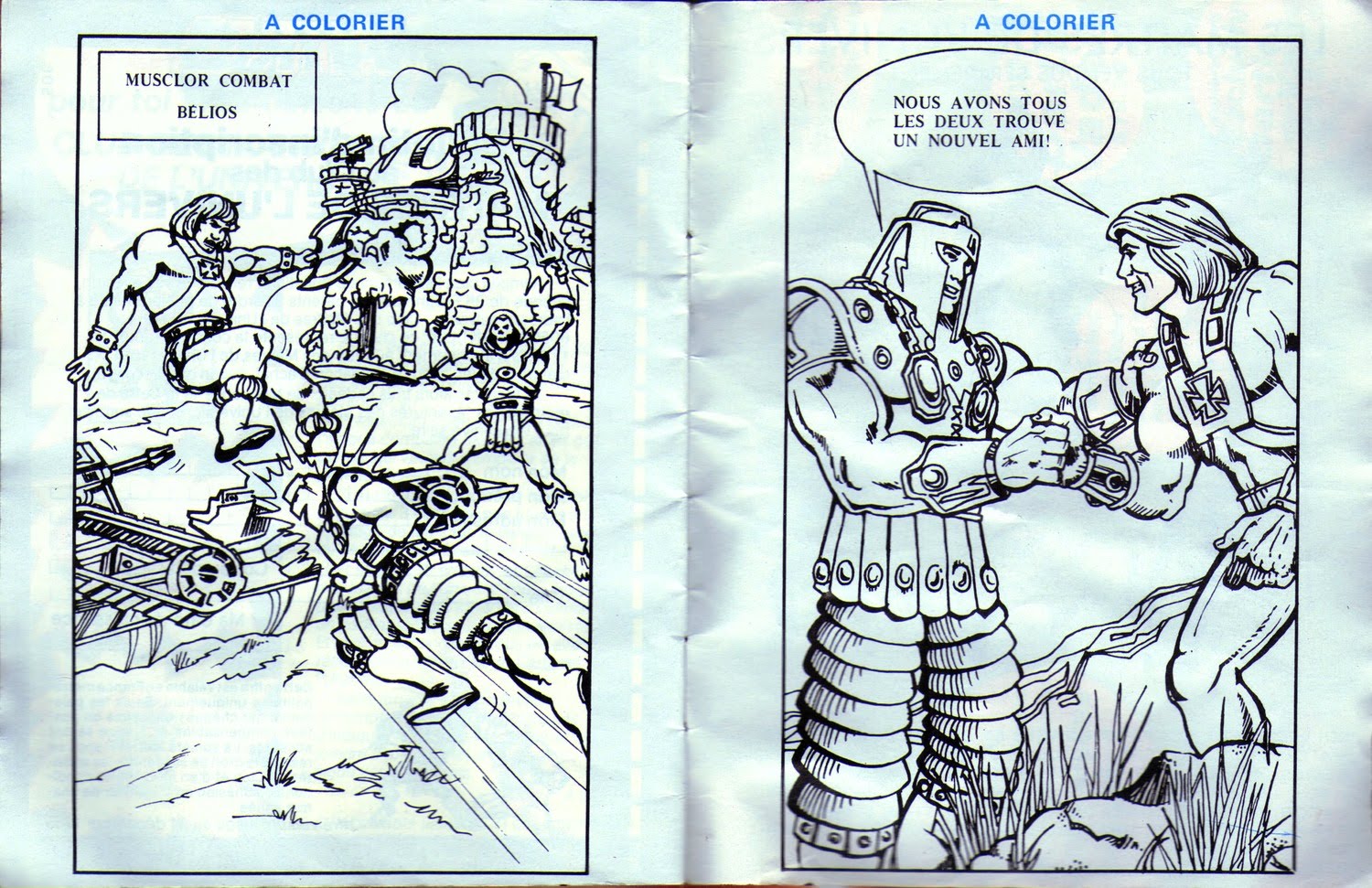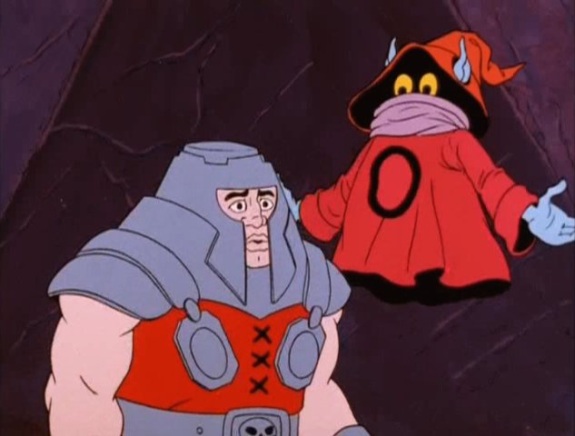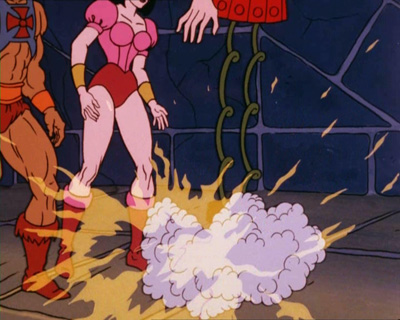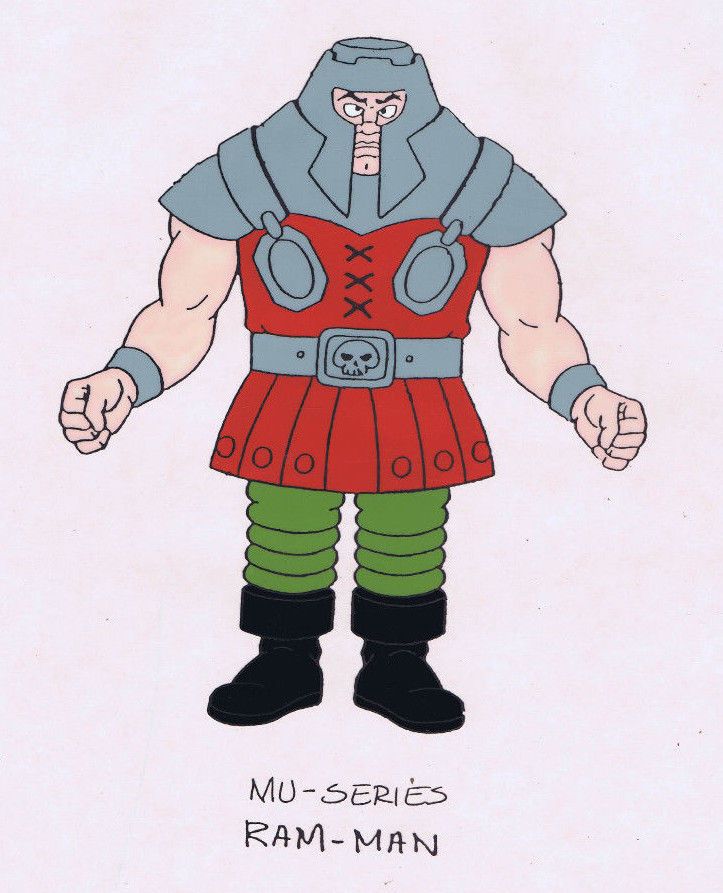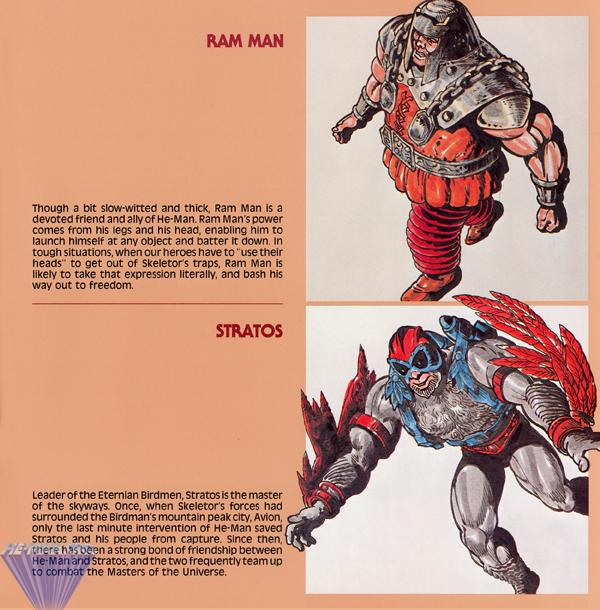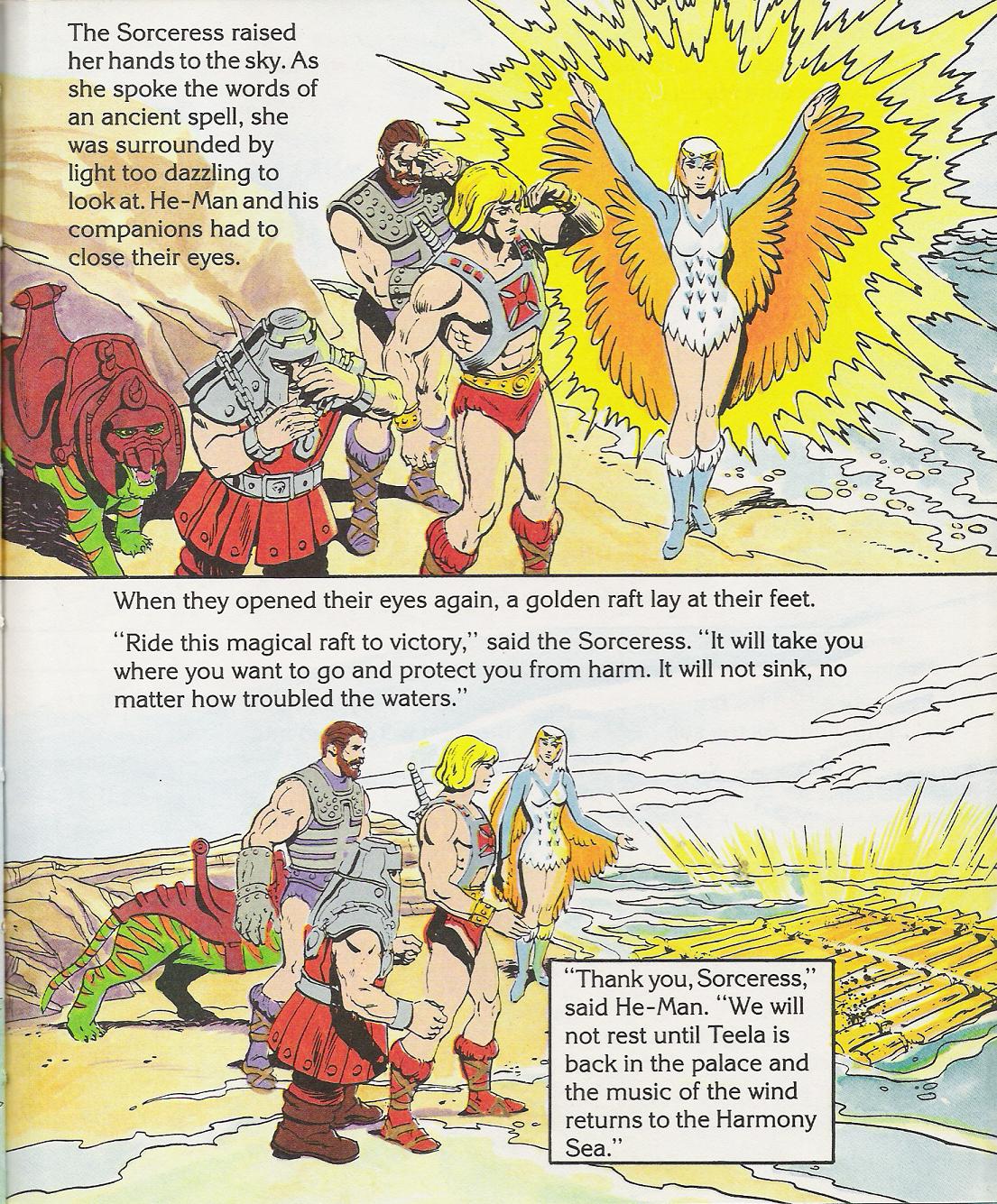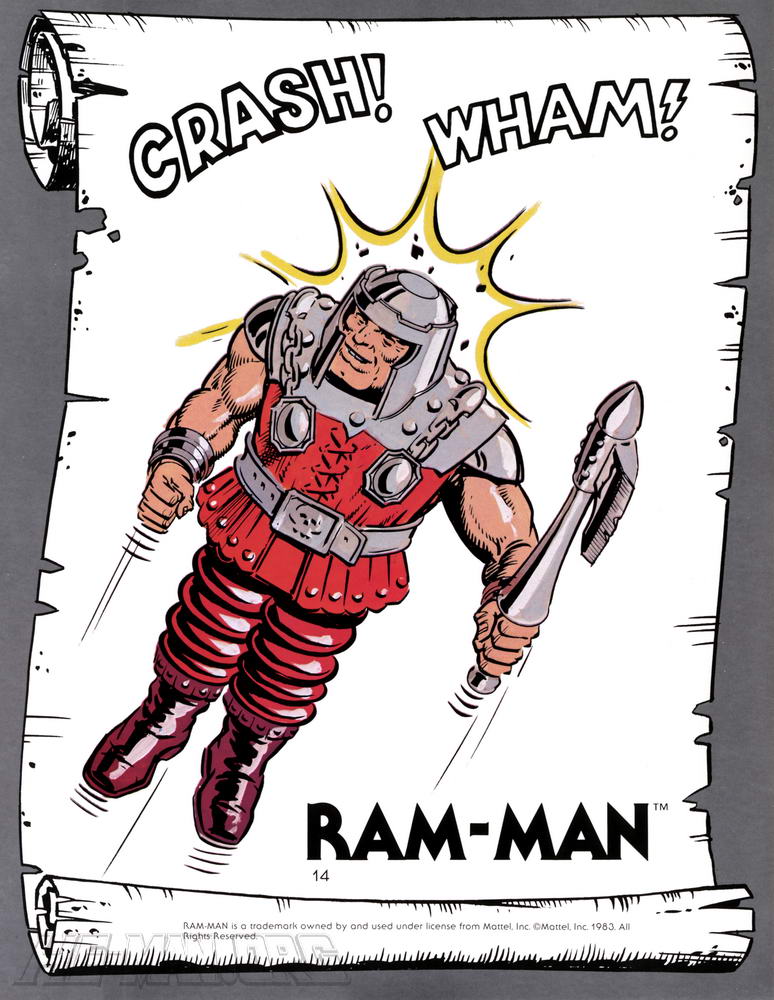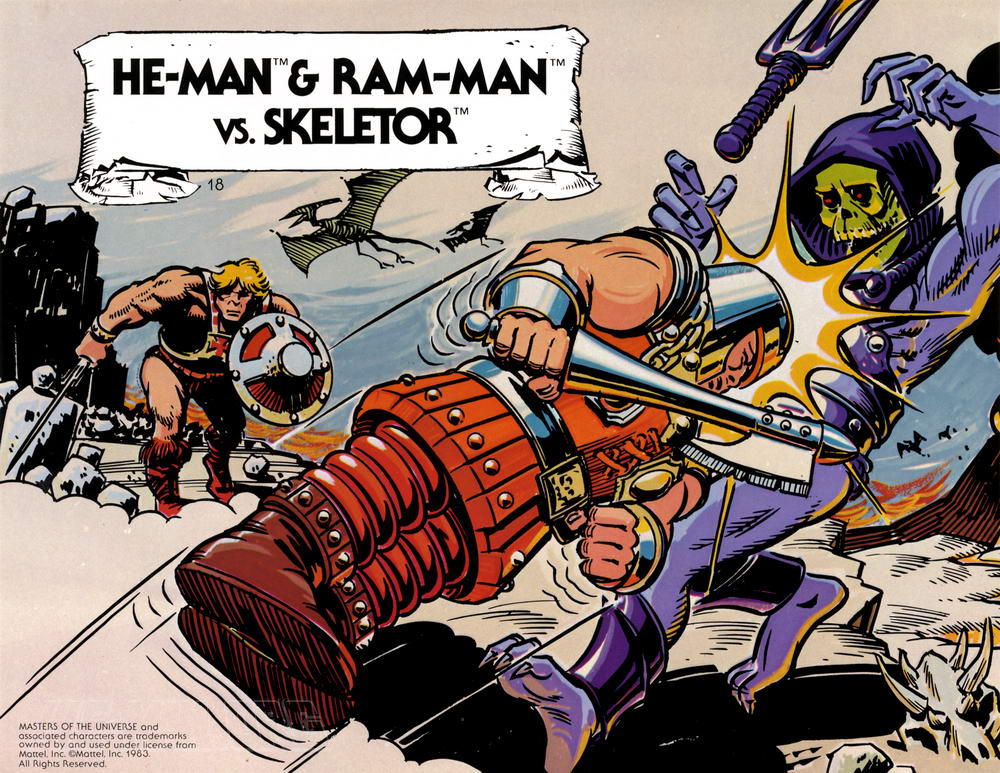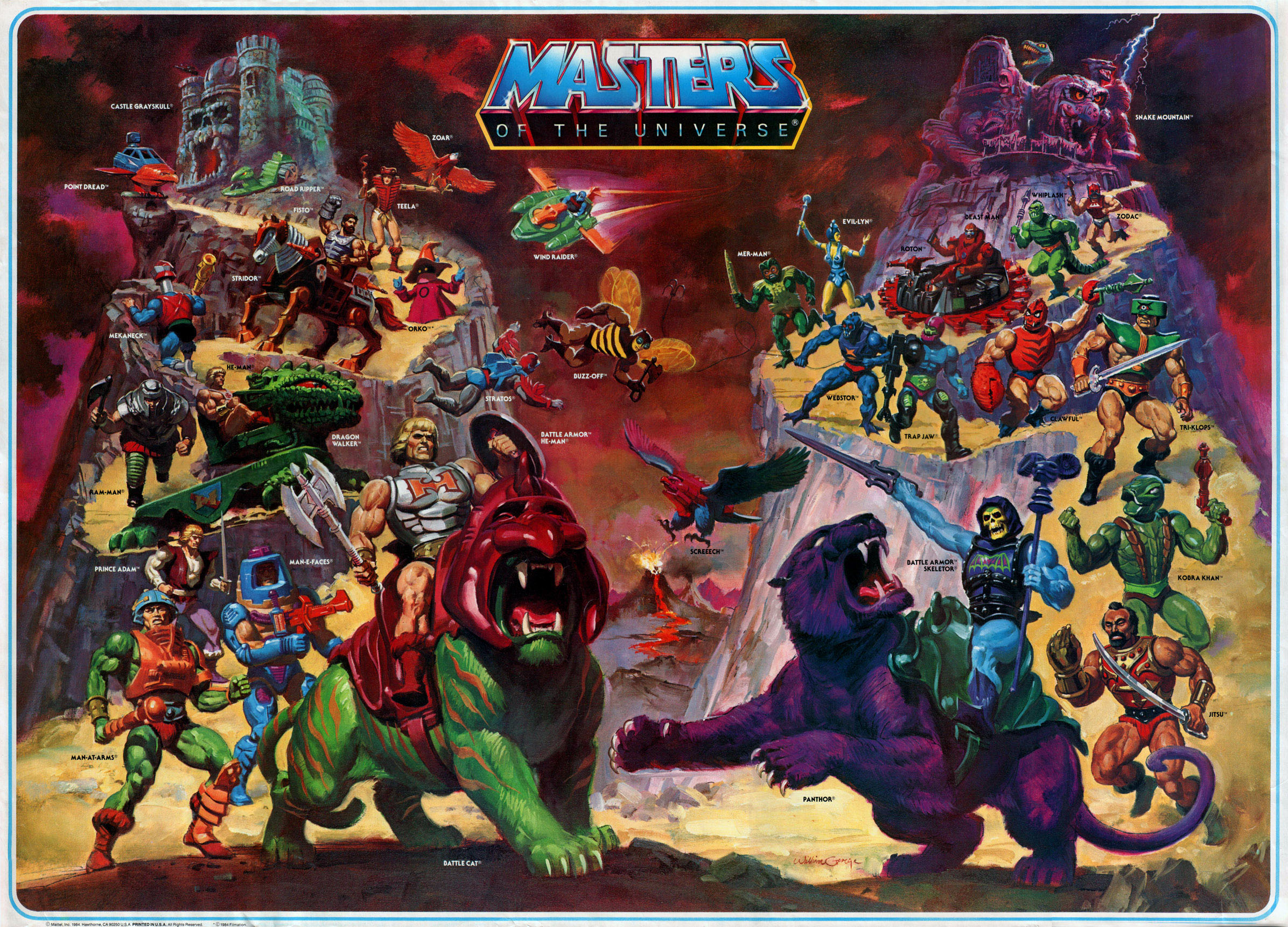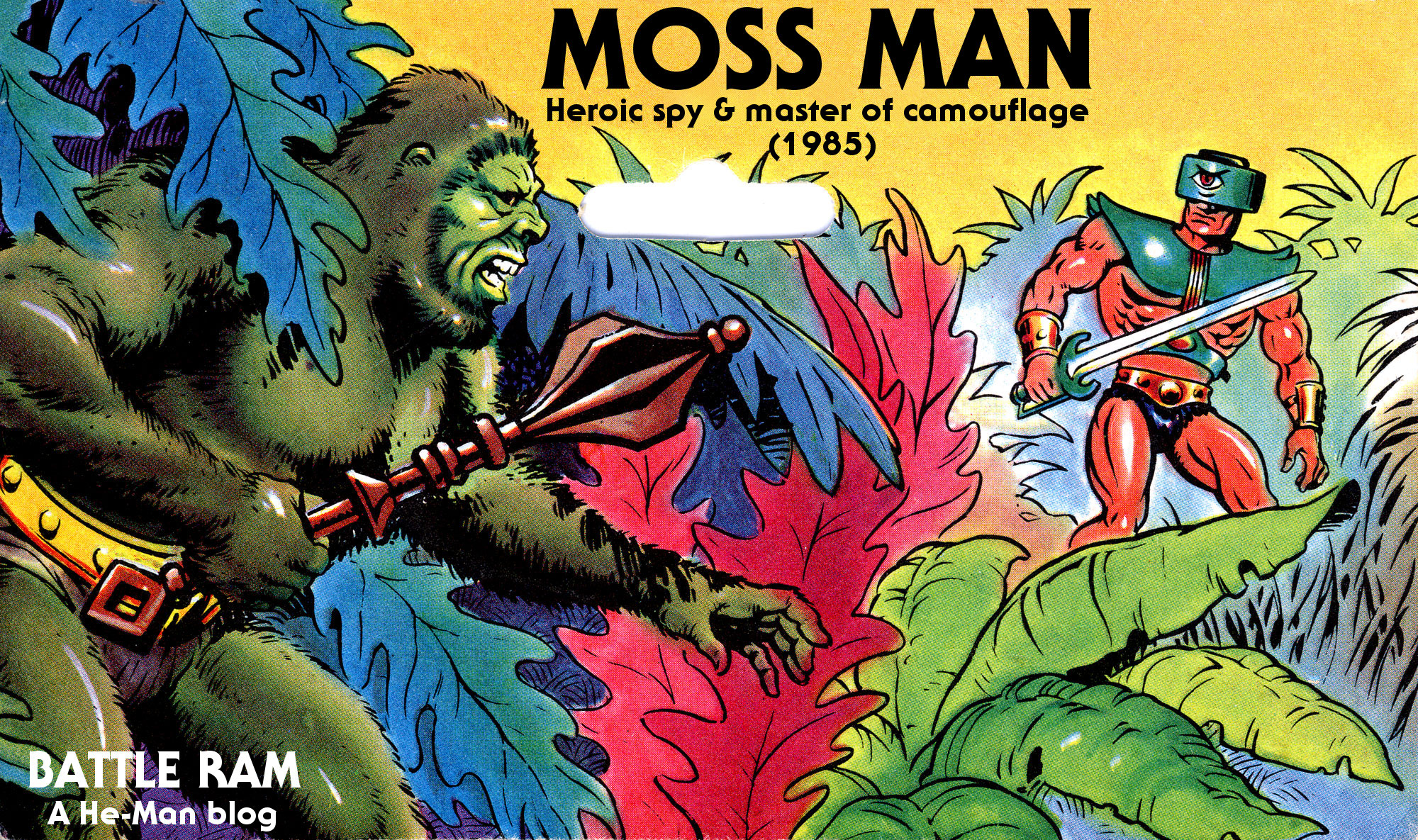
Moss Man is another figure that I have very clear memories of. I remember getting him for Christmas, probably in 1985. Unlike Stinkor, I didn’t remember him based on his smell. His pine scent wasn’t immediately obvious because I ripped him off of his card right next to the Christmas tree, which had an even stronger pine scent. I remember my parents had allowed us to open one present on the night before Christmas. All the lights were out in the room except for the blinking colored lights on the tree. I remember the way that Moss Man’s green and brown flock glistened in the colored lights, and the prickly texture of the figure. It wasn’t until I had got him back to my room that I realized he also had a pine scent.
Like Mekaneck and Buzz-Off, Moss Man was characterized as a spy, with the ability to blend into his surroundings. I remember being a little frustrated that I could still pick him out deep in my mother’s potted plants. His bright yellow belt gave him away every time.

It’s possible that Moss Man was based on the legendary Florida Moss Man – a creature said to roam Florida’s Withlacoochee State Forest.
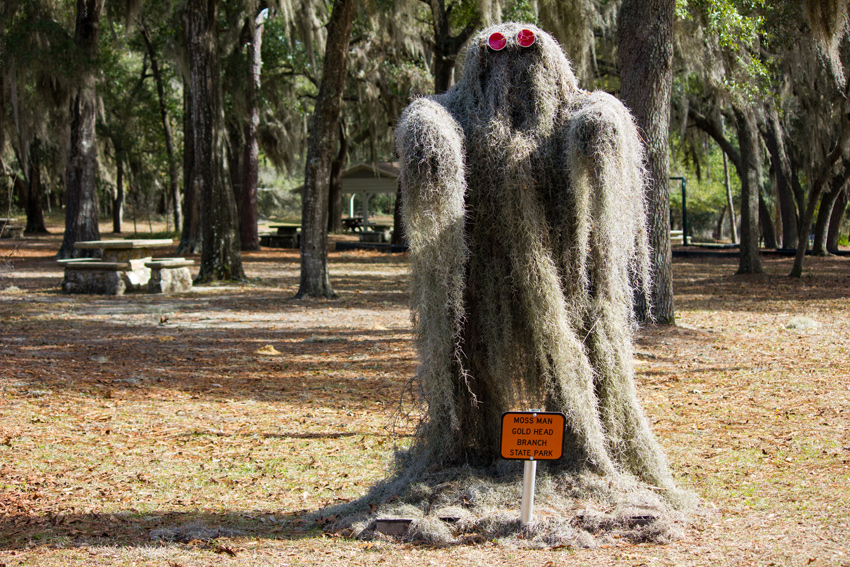
Moss Man is very simple action figure. He’s a green Beast Man covered with green and yellow flock (small nylon particles), with a brown version of the mace weapon that came with Castle Grayskull. In fact, the only known prototype for Moss Man is just what you’d expect – he’s literally a Beast Man figure that someone at Mattel painted in green, brown and yellow, with some flock added over top top.

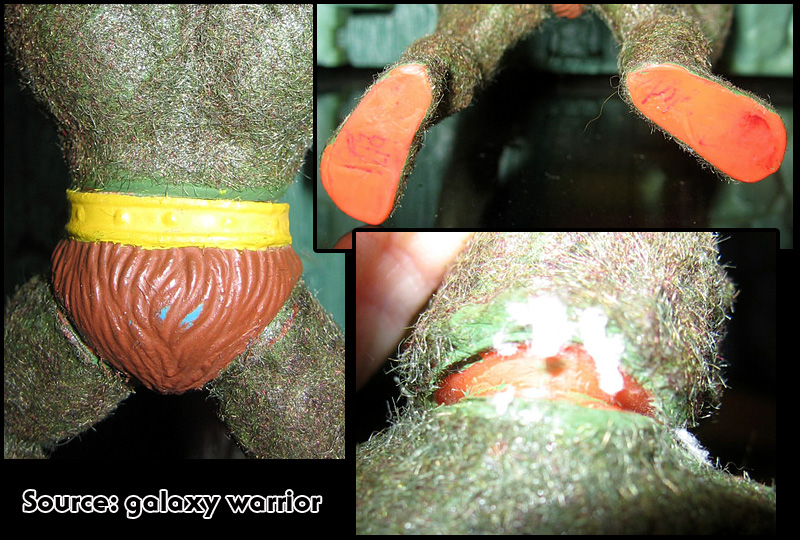
There are a few differences from the prototype to the production Moss Man. The prototype has forward-looking eyes and painted fangs. On the production Moss Man, the eyes are looking off to the side, and the fangs are painted over to give the impression of more human-like teeth. It seems to have been an effort to make the Beast Man face seem a little less angry. It was somewhat successful, although Moss Man still seems pretty intense:

The cross sell art seems to be derived from the vintage toy given his fangless teeth, however his eyes do look forward:


The illustrated scene on the back of his packaging was done by Dave Stevens, who also illustrated Stinkor and Spikor:


An injured Moss Man also appeared on the illustration on the back of Terror Claws Skeletor’s card:
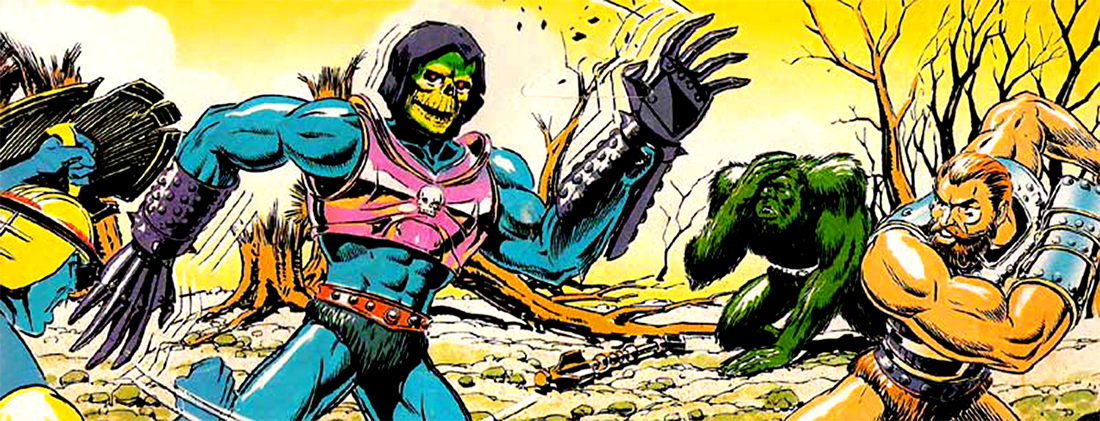
Moss Man was also sold in the following gift sets (second image via Grayskull Museum):

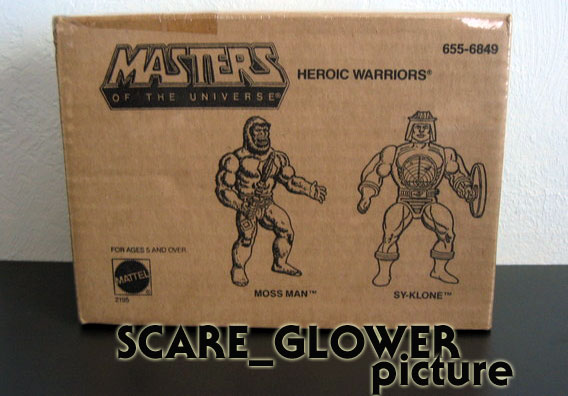
I think it’s likely that both Moss Man and Stinkor were among the first new figures to be released in 1985. Their cross sell artwork shows up first on the back of vehicle packaging, along with the figures released from 1982-1984:

Moss Man is the second and final flocked toy in the vintage MOTU toyline. The first was Panthor. Panthor’s “fur” was much shorter and smoother, however.

The Argentinian Top Toys release of of Moss Man had painted fangs, like the prototype, and his mossy “fur” was quite long and luxurious.


Although Errol McCarthy didn’t illustrate Moss Man’s cardback, he did produce this artwork intended for licensees. It features a very friendly-looking Moss Man with a more human-like face:
Moss Man and Stinkor were sold with the same mini comic – The Stench of Evil! In the story, Stinkor threatens Eternia’s wildlife with his rancid smell. Only Moss Man is able to overpower Stinkor with his pine fresh scent:
In the Filmation cartoon, Moss Man had the ability to talk to plants and transform his body:
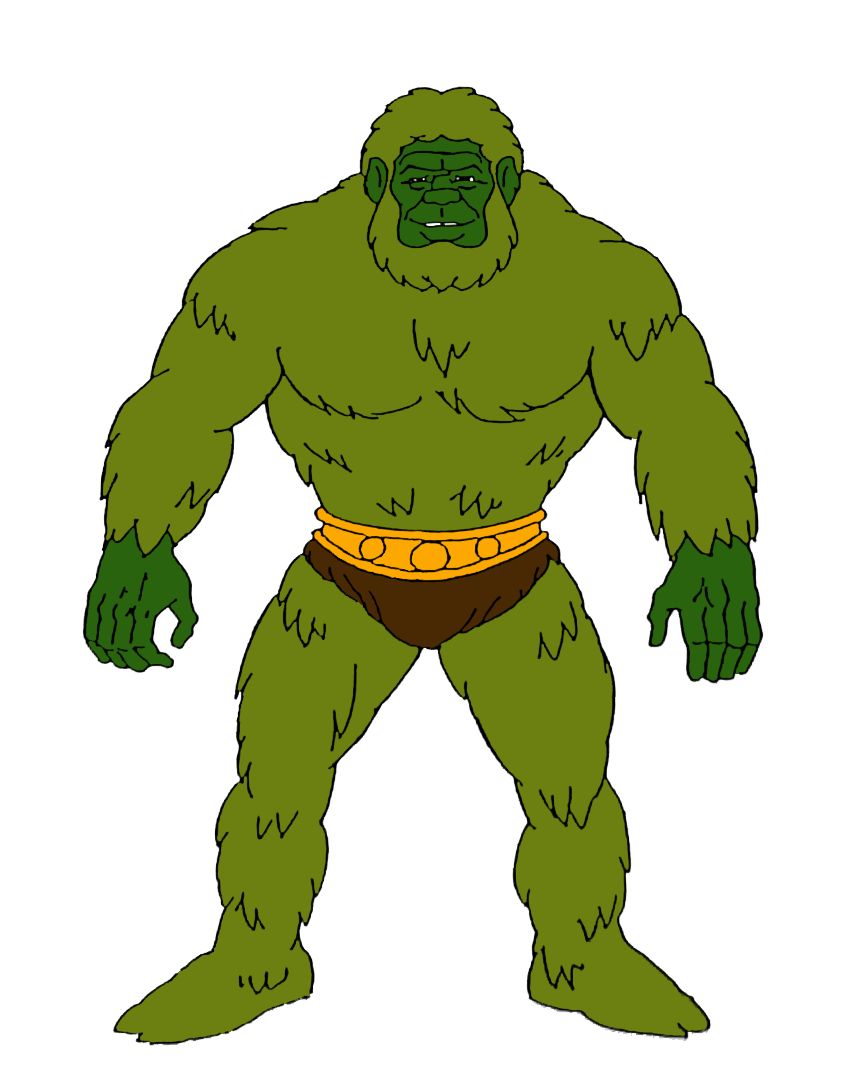
Moss Man appears in a couple of great Earl Norem illustrations that were printed as posters for the US Masters of the Universe magazine:

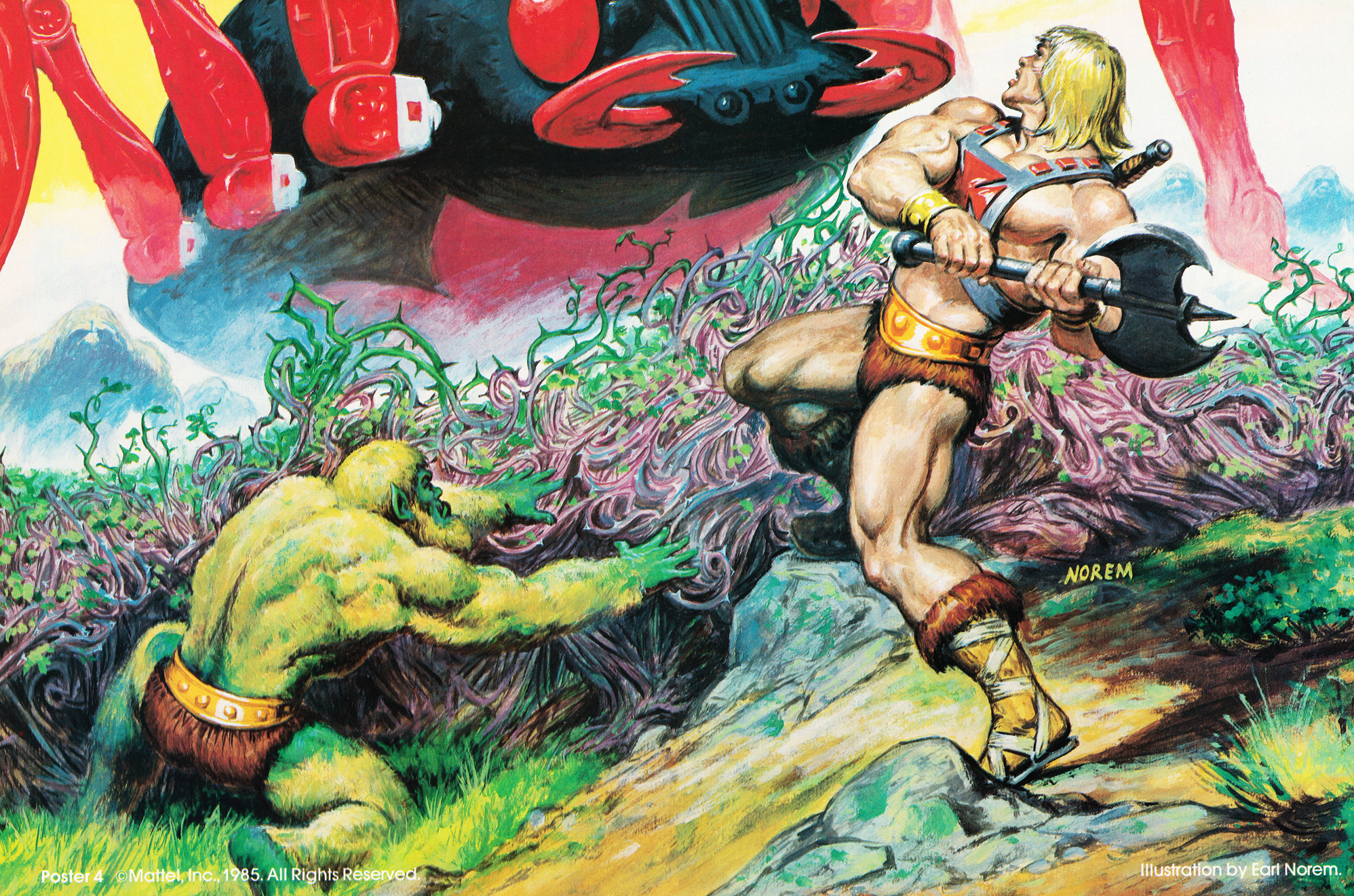
In the UK Masters of the Universe Magazine, Moss Man was colored brown and gave lessons on manners to kids:

I’m not sure why, but it seems to me that the “cheap repaints” of the Masters of the Universe toyline are among the most memorable action figures. Faker, Stinkor and Moss Man were all entirely made from recycled molds, and yet they seem to be among the most memorable figures in the toyline. Maybe it’s because Mattel tried to make up for that fact by giving them audacious colors (Faker), a powerful and funky smell (Stinkor) or prickly “fur” (Moss Man).

